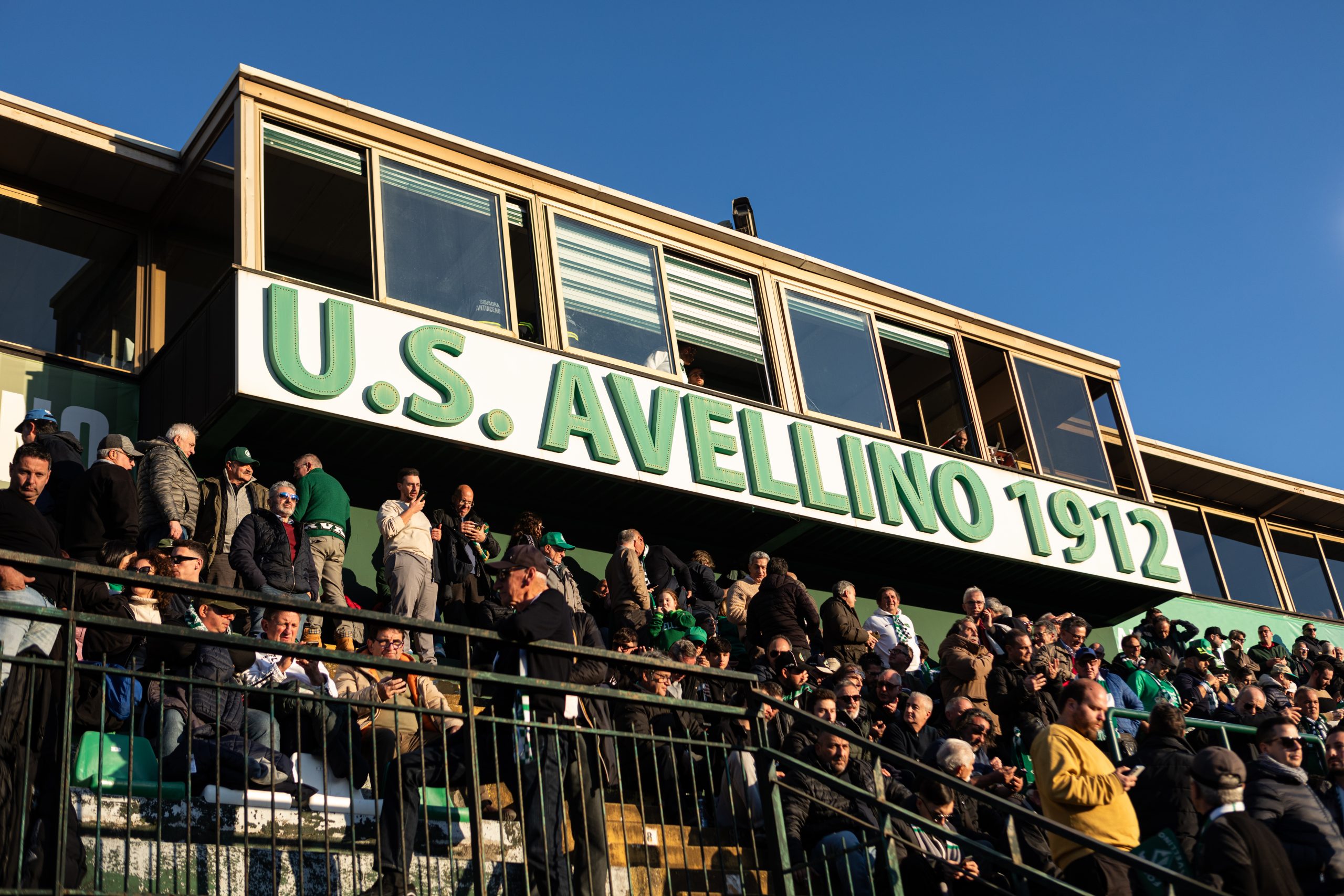
The Atlantic Dispatch Studio
The Atlantic Dispatch Studio is the creative arm of our publication, a full-service content studio built on storytelling, design, and culture.
We collaborate with clubs, brands, and destinations to craft campaigns that connect with audiences through authenticity and creativity. Drawing on our editorial expertise in football, culture, photography, and travel, we develop tailored content that resonates far beyond the surface.
Our work spans:
Content Creation — photography, film, editorial, and design.
Brand Storytelling — campaigns that highlight heritage, identity, and culture.
Creative Strategy — shaping narratives that connect clubs and brands to their communities.
Publishing Projects — from bespoke zines to coffee-table books.
We’ve worked with Fiorentina, Legia Warsaw, Hellas Verona, AS Monaco, Visit Naples, Visit Tromsø, Best Arctic, Marek Hamšík, Stanley Lobotka, and more, producing projects that blend football, place, and culture in innovative ways.
At its core, The Atlantic Dispatch Studio is about creating work with depth and meaning — work that not only promotes but inspires, connects, and lasts.
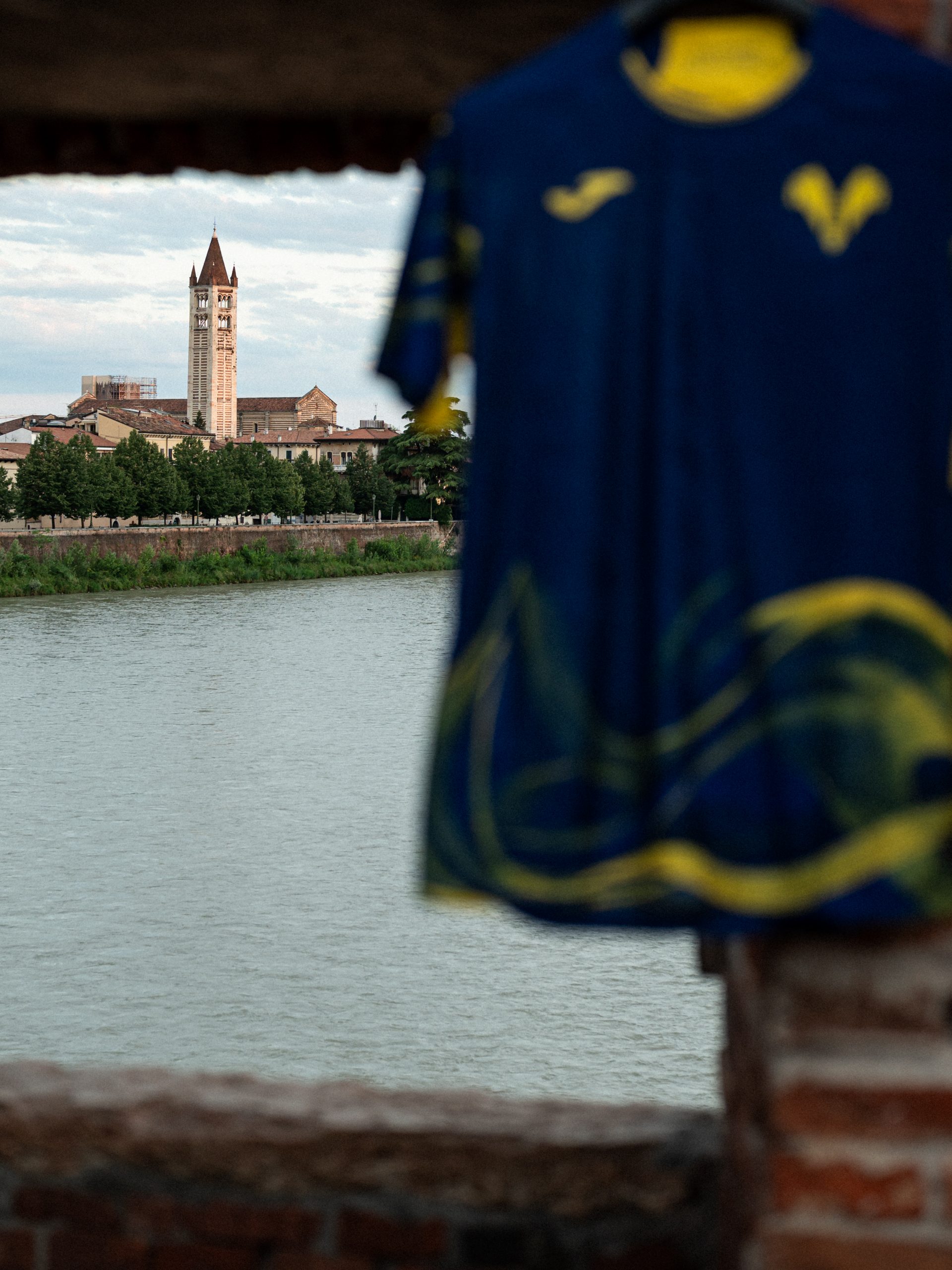
Studio
Words and Images Mike Carranza
Heart of this town, only great love. Yellow like the sun. Red like my heart.
Being pitchside for a Serie A match at the Stadio Olimpico felt surreal. I had spent the week working on pitches across Roma, moving from one field to another, yet seeing very little of the city itself. Rome, in many ways, had remained just out of reach.
The match between Roma and Napoli marked my third visit to the Stadio Olimpico in just five days. The first came as a tourist, led through the cavernous bowl by a guide, the stands empty as ground staff meticulously prepared the pitch. The second was a Europa League night against Midtjylland, where beers were shared and an espresso followed — as tradition demands.
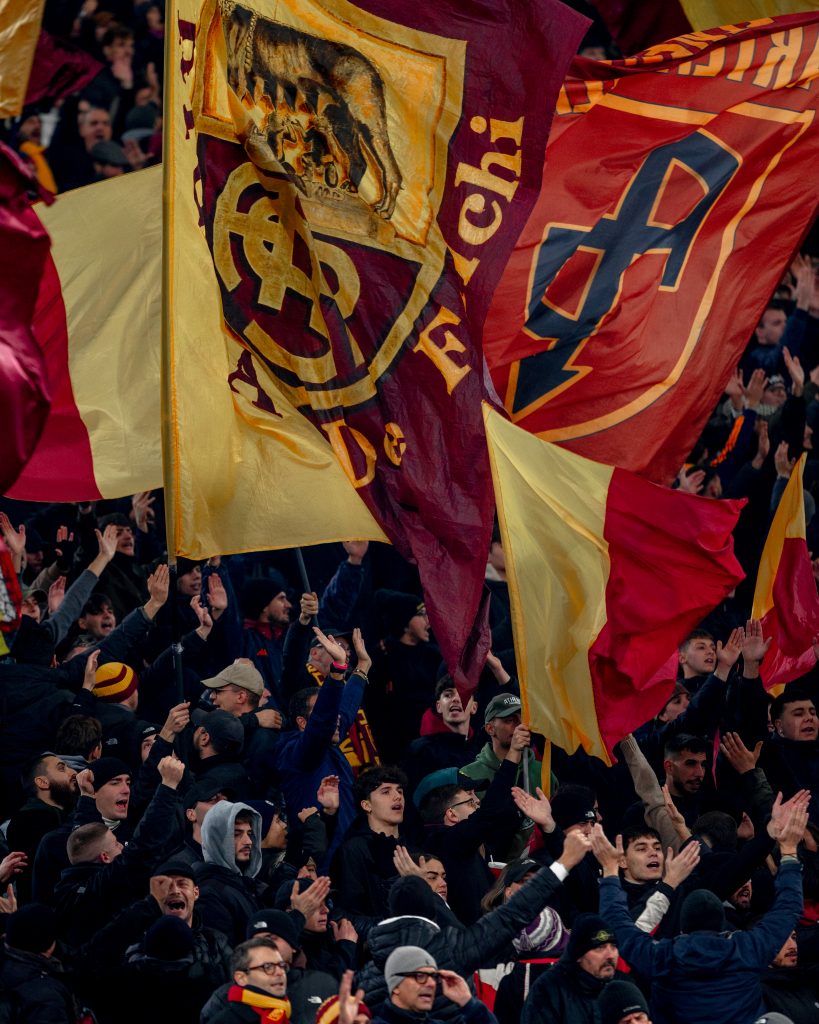
It was then that I first heard it.
“Roma Roma Roma.”
The chant poured from the stands and reverberated through the concrete, echoing long after the final note. The words struck instantly: Heart of this town, only great love. Yellow like the sun. Red like my heart. It felt less like a song and more like a declaration.
My relationship with football has always been layered — built on love, pain, struggle, and fleeting moments of triumph. It is the longest relationship of my life, one that began when I was three years old. Football became a constant: a place of comfort through heartbreak and failure, success and sadness, joy and disappointment. Long after childhood dreams faded, football remained.
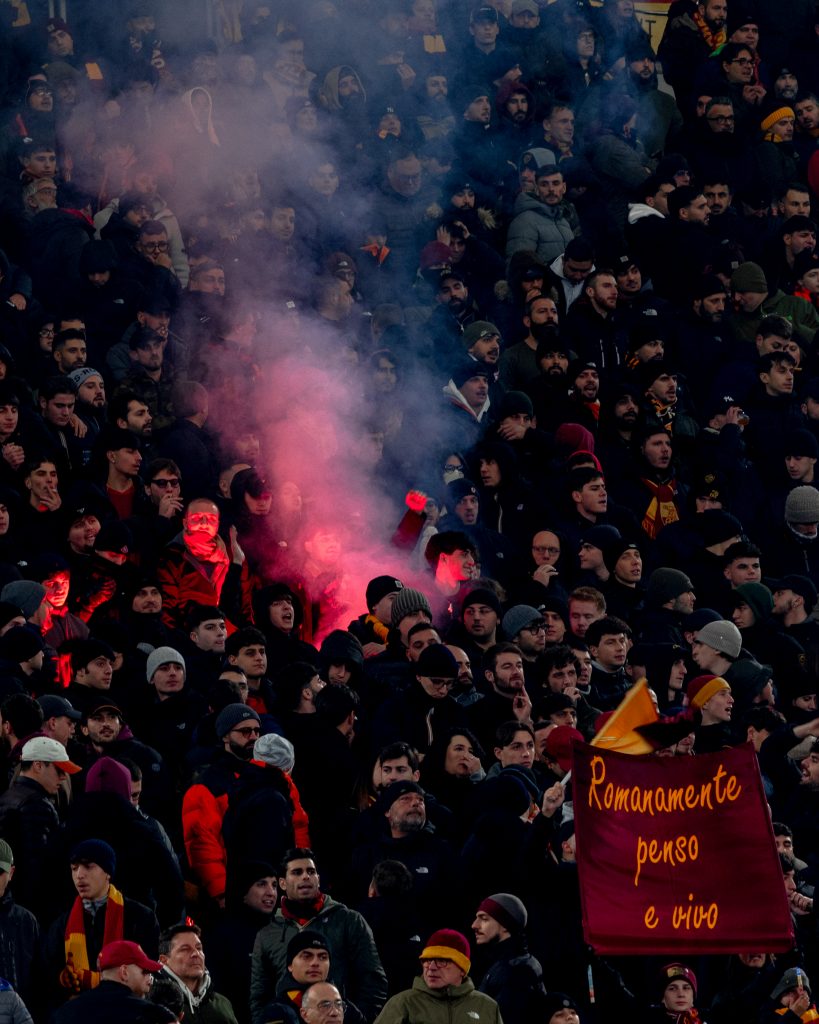
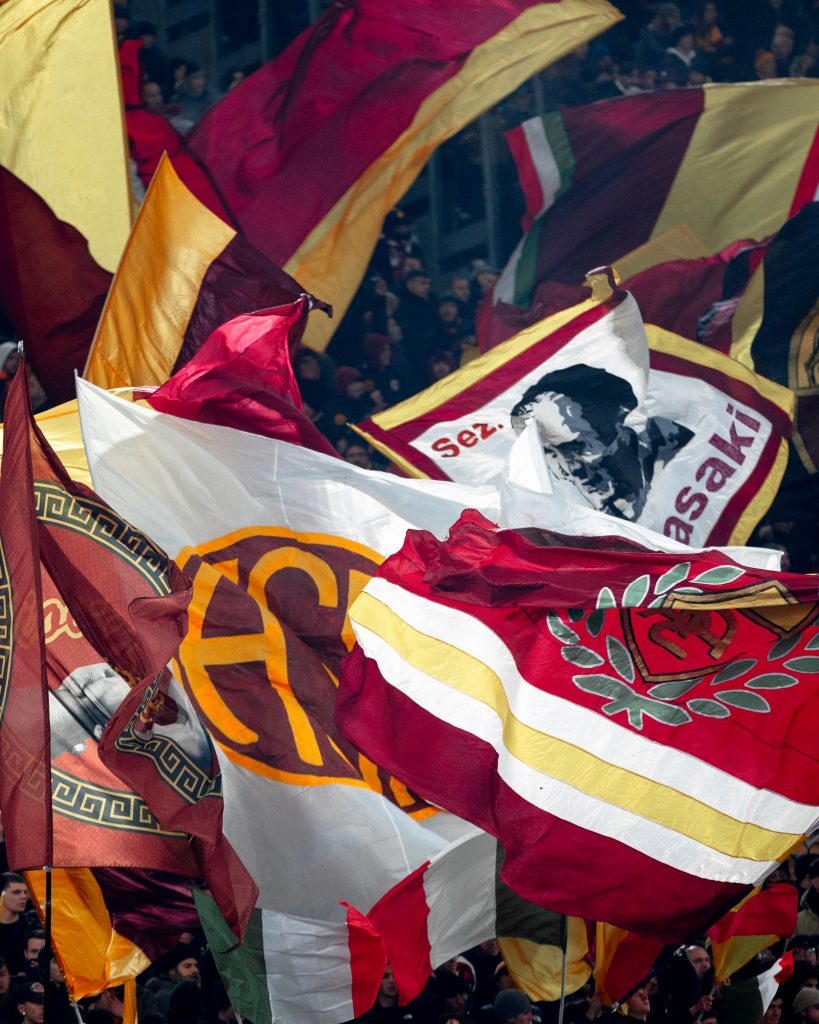
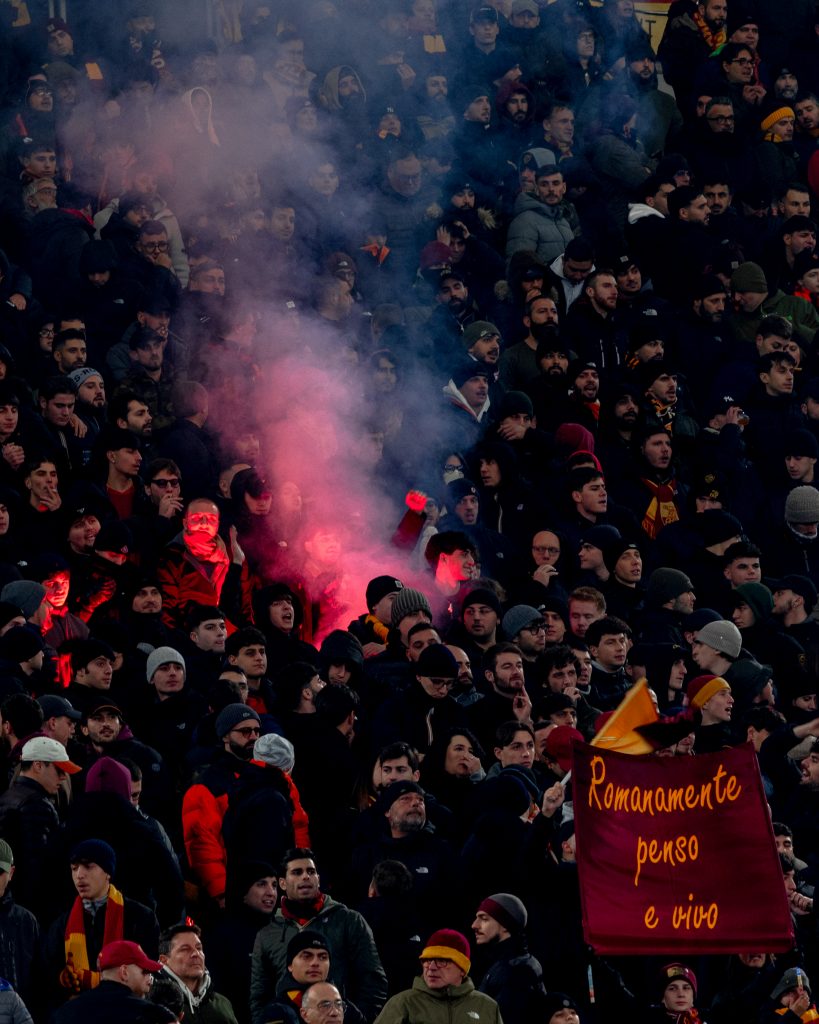
During my time in Rome, bad news arrived from home. The kind that settles quietly but heavily. Yet even then, I knew there was something I needed to fulfil — something owed to that three-year-old boy who dreamed only of football.
I arrived at the Stadio Olimpico for Napoli v Roma exhausted, overworked, and emotionally drained. But the moment I stepped onto the pitch, it returned.
“Roma, Roma, Roma — heart of this town, only great love.”
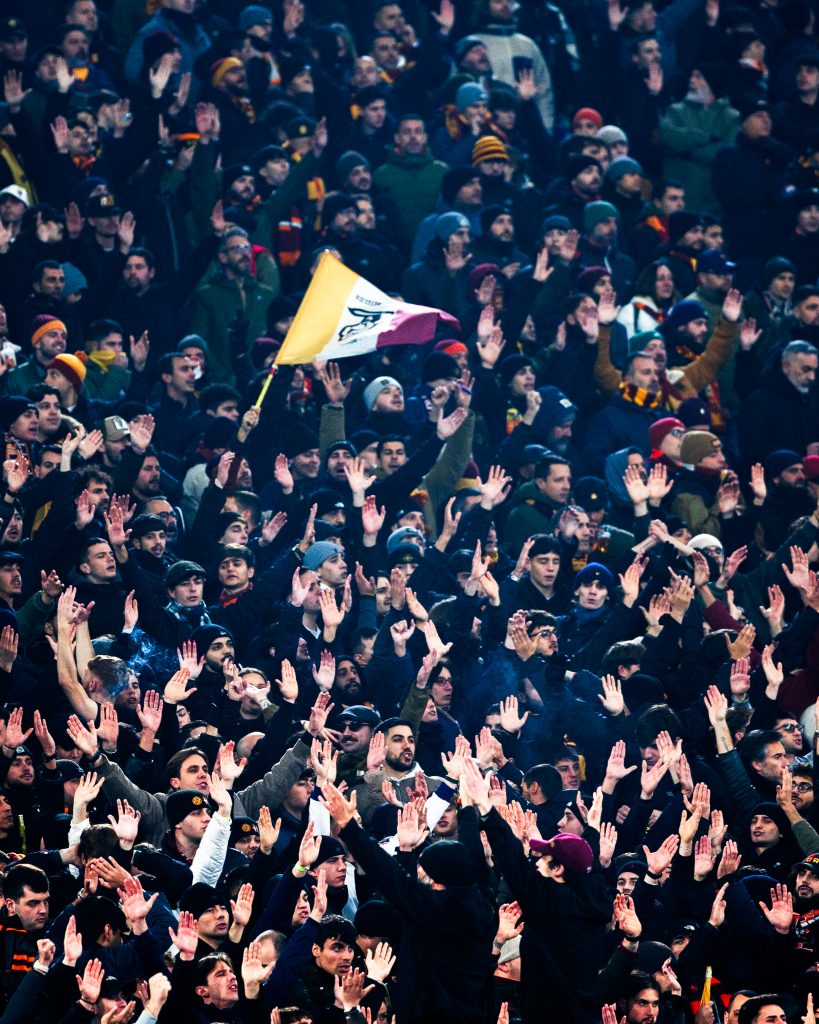
In that instant, the weight lifted. What remained was joy — pure, grounding, unmistakable. I felt at home. Not alone, but surrounded by something familiar and eternal. Football, in the Eternal City. My feet on the grass. Everything exactly where it was meant to be.
The day before my flight back to the United States, standing alone on my balcony, I realised something was ending — and something else was beginning. A closing chapter, followed by an uncertain next step. There was no time for fear or anxiety. No room for doubt.
The next day, I would be back on a football pitch. And there, as it has always been, everything would be okay.

Words and Images Mike Carranza

THE ATLANTIC DISPATCH STUDIO
Studio
The Atlantic Dispatch Studio is the creative arm of our publication — a full-service content studio built on storytelling, design, and culture.

The Eternal City Through Football
Words and Images Mike Carranza Heart of this town, only
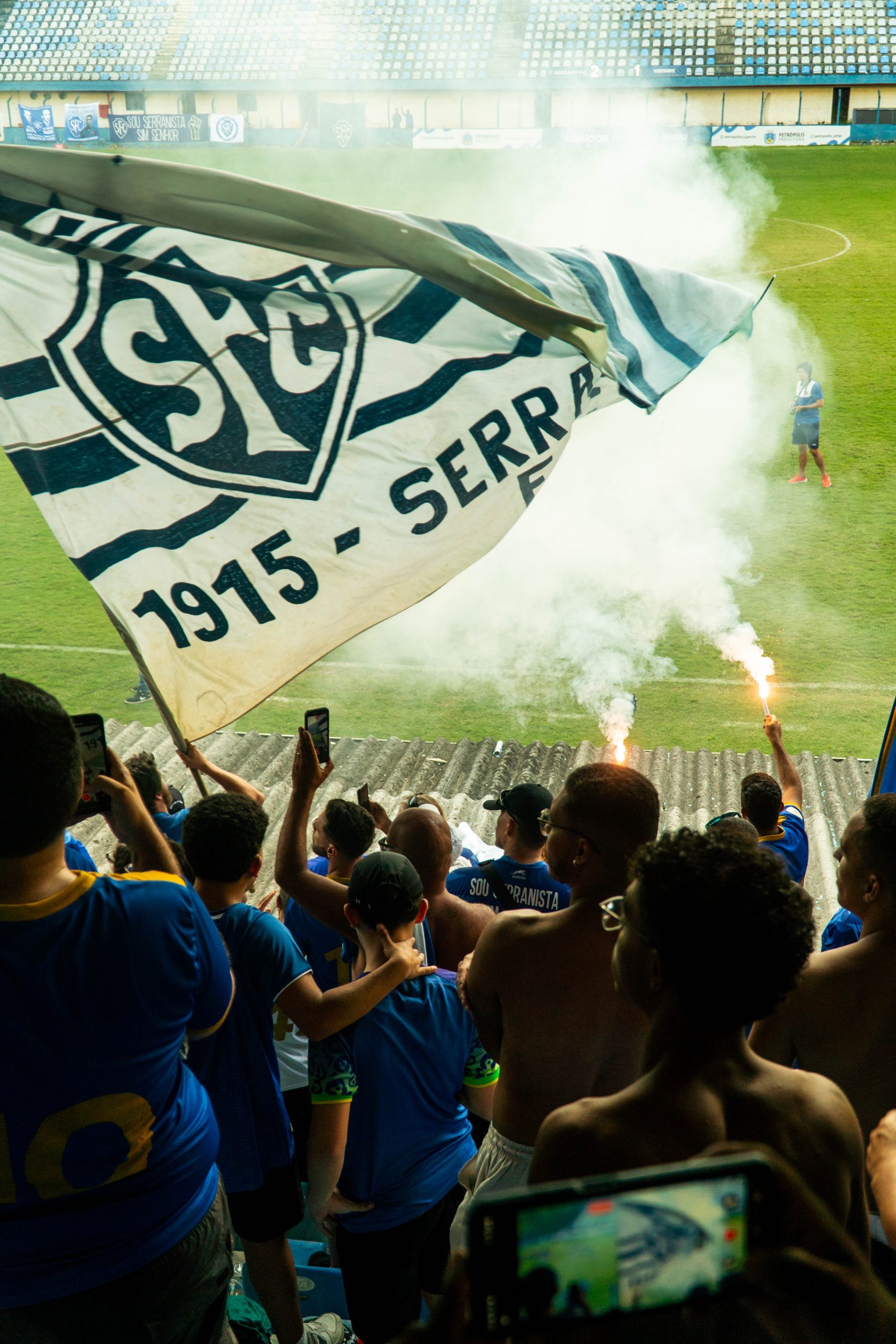
Serrano FC: Petrópolis’ Club With a Story to Tell
High up in the hills of Rio de Janeiro state
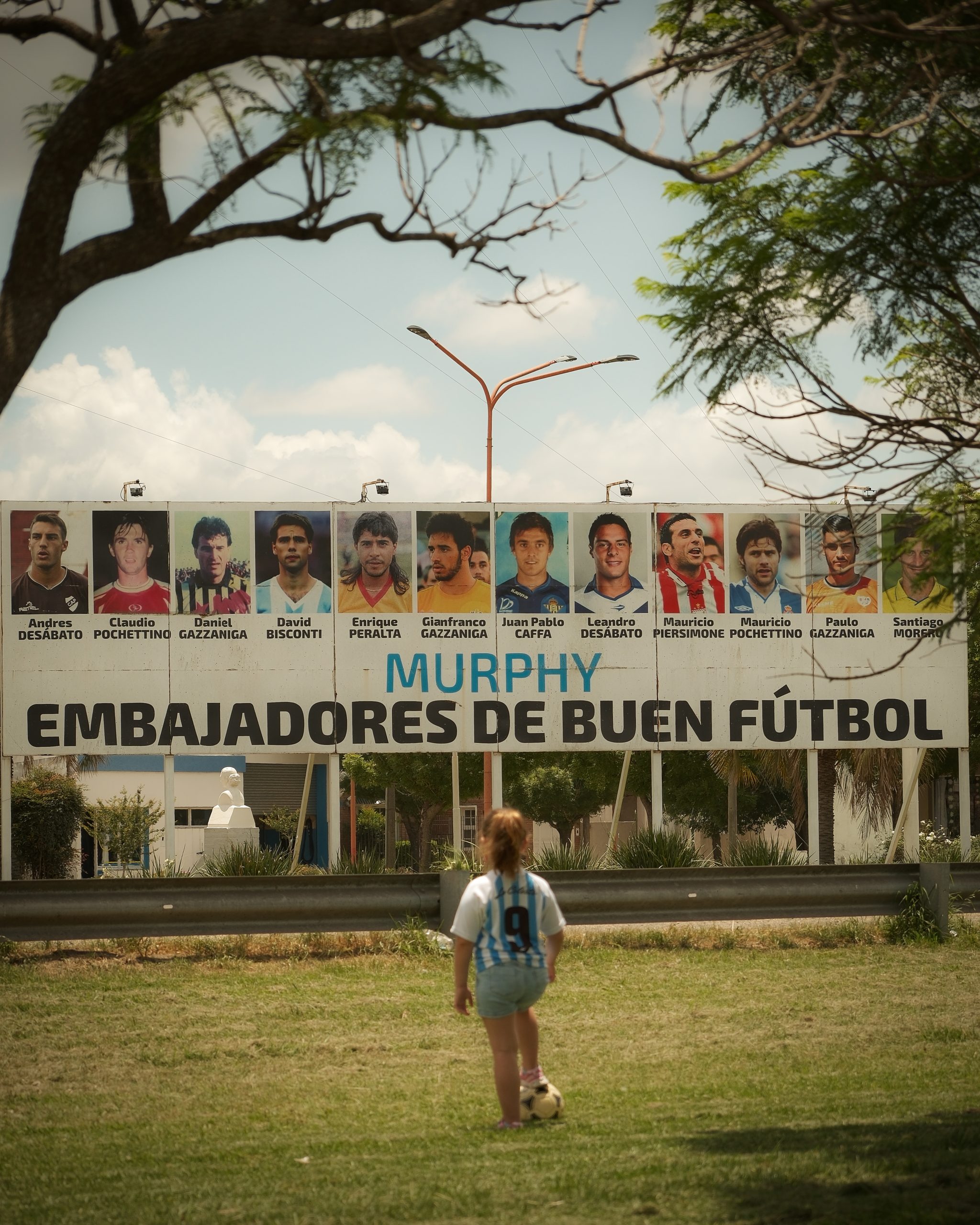
Murphy: The Cradle of the Santafesino Footballer and Home of Unión y Cultura
All words and images by Pedro J Caffa “In Murphy,
THE ATLANTIC DISPATCH STUDIO
Latest
All words and images by Pedro J Caffa
“In Murphy, football is something more: it’s identity.“
Entering the town, a sign makes it unmistakably clear: you’re crossing the gateway to the heart of football. More than fifteen professional footballers were born in Murphy. It’s no myth, no exaggeration. It might be ordinary somewhere else, sure, but here there’s a twist: the town has fewer than five thousand people. And in this province that gave the world Messi and Di María, the “Cradle of the Santafesino Footballer” —by Law 14.172— is, fittingly, Murphy.
Murphy, named after an Irish landowner in the middle of the Argentine countryside, has only one football club. Just one, for everyone. Centro Recreativo Unión y Cultura is a pitch, a meeting point, and an inheritance. Mauricio Pochettino, Paulo Gazzaniga, and a long list of players came from here, carrying the town’s name farther than any map ever could.

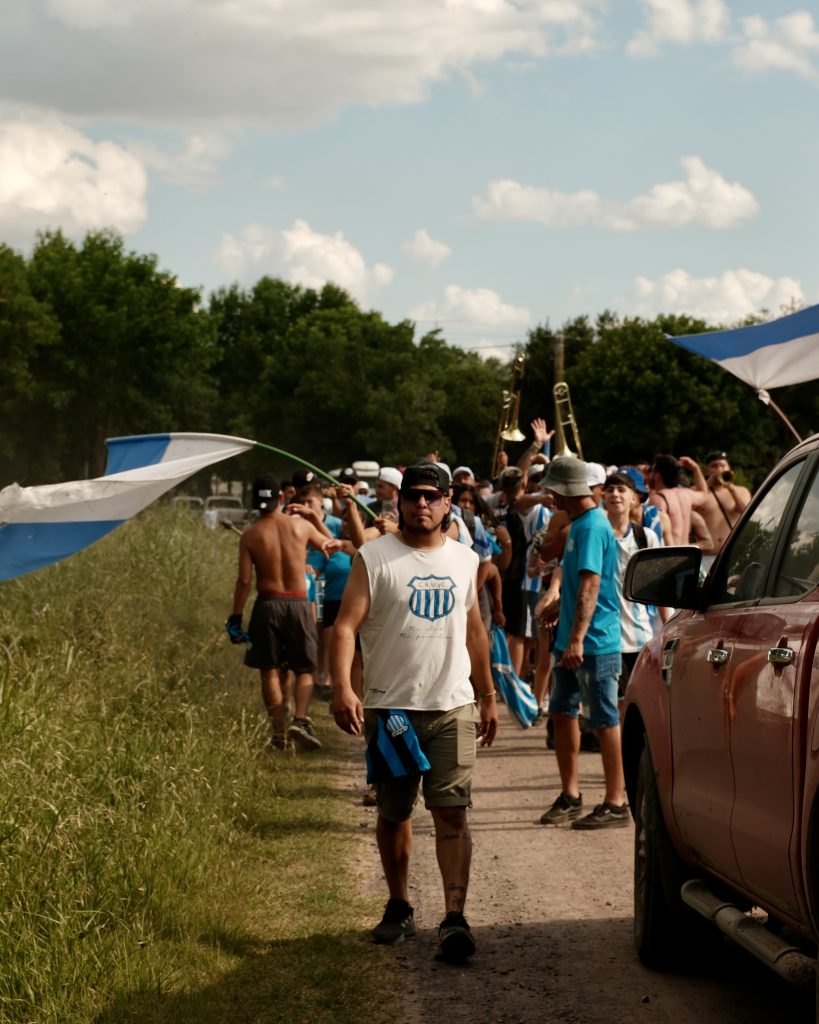
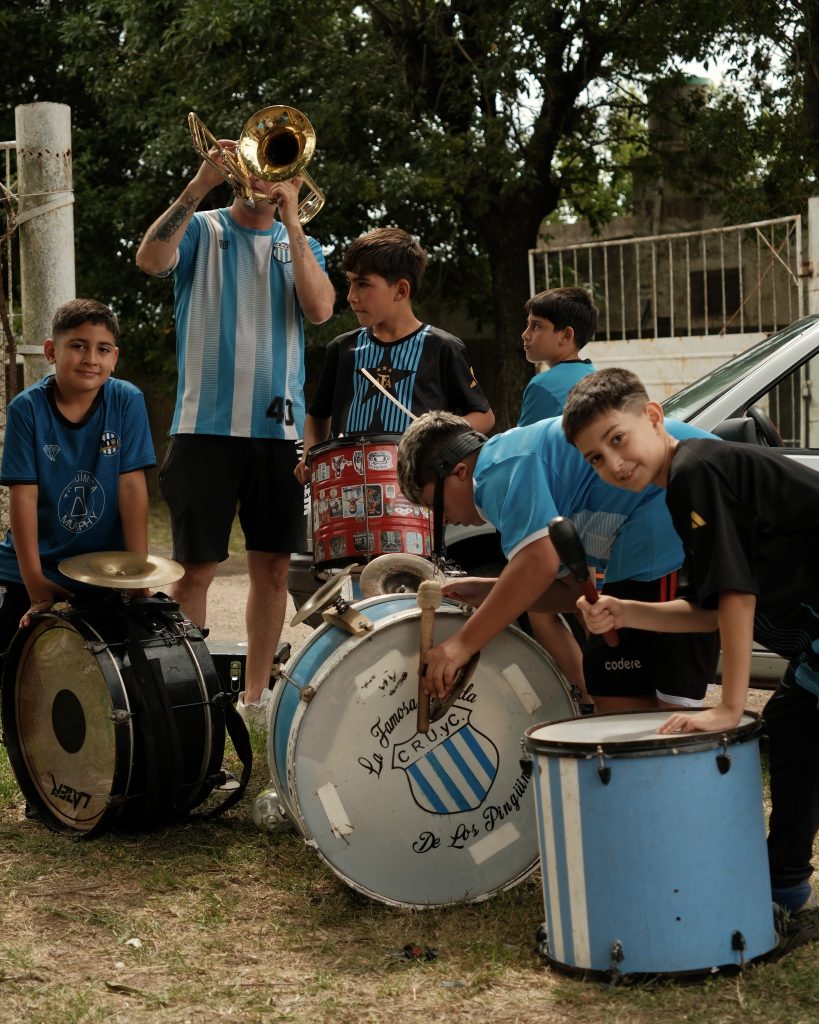
The year 2025 was special. The Centenary, and a perfect storm: a new leadership committee led by local idols; a squad and coaching staff made up almost entirely by homegrown players; and a fan base that doesn’t do things halfway, with “Los Pingüinos” leading the noise. All of them pushing together on a path that took Unión y Cultura back to the regional Liga Venadense final after eighteen long years.
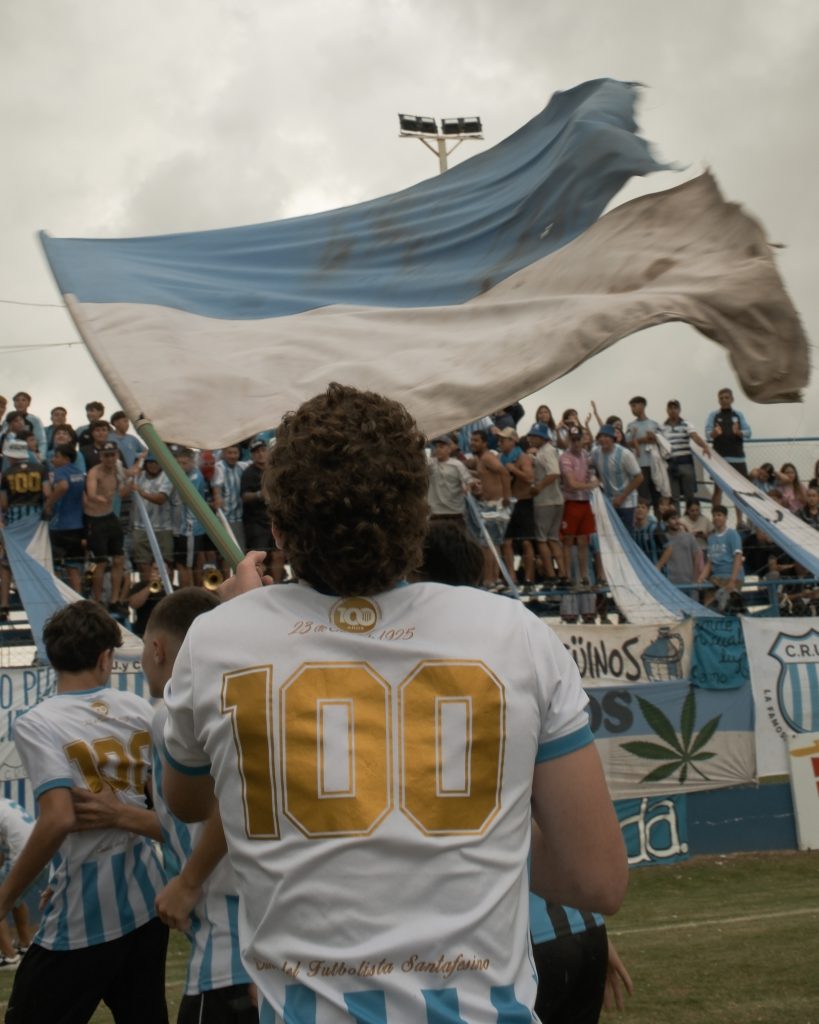

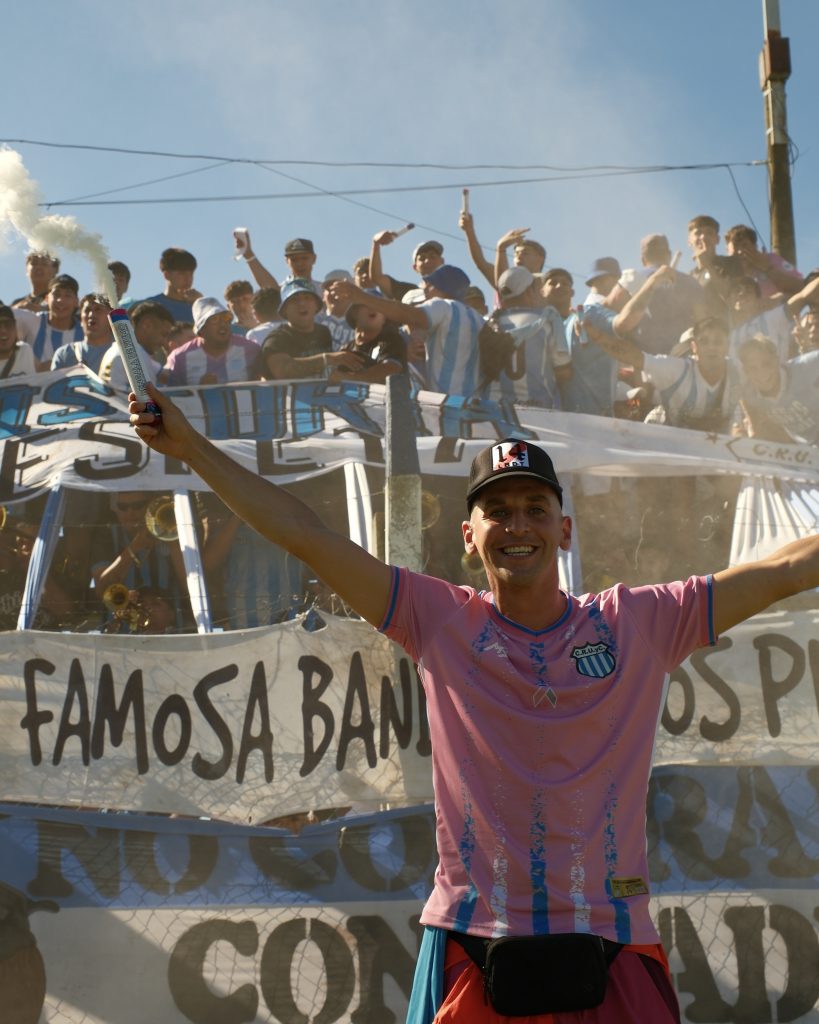

It wasn’t enough to claim the title, but that’s another story. Sometimes epic feats have nothing to do with trophies, and sometimes trophies don’t look like cups. Is there anything more powerful than watching an entire town lift a club that is its people… or a town that becomes its club?
In Argentina, football is lived in a special way, we already know that. But in Murphy, football is something more: it’s identity. To say “Murphy” is to say “Unión y Cultura.” And it’s to feel the heart swell with hope, once again.
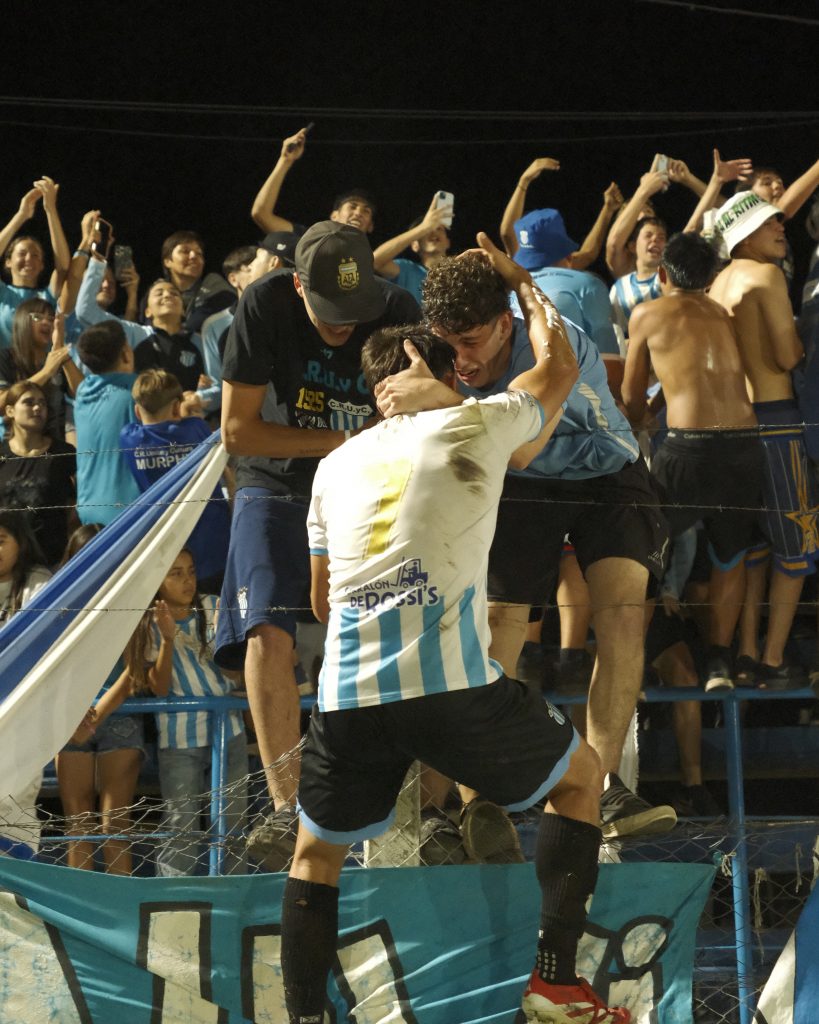
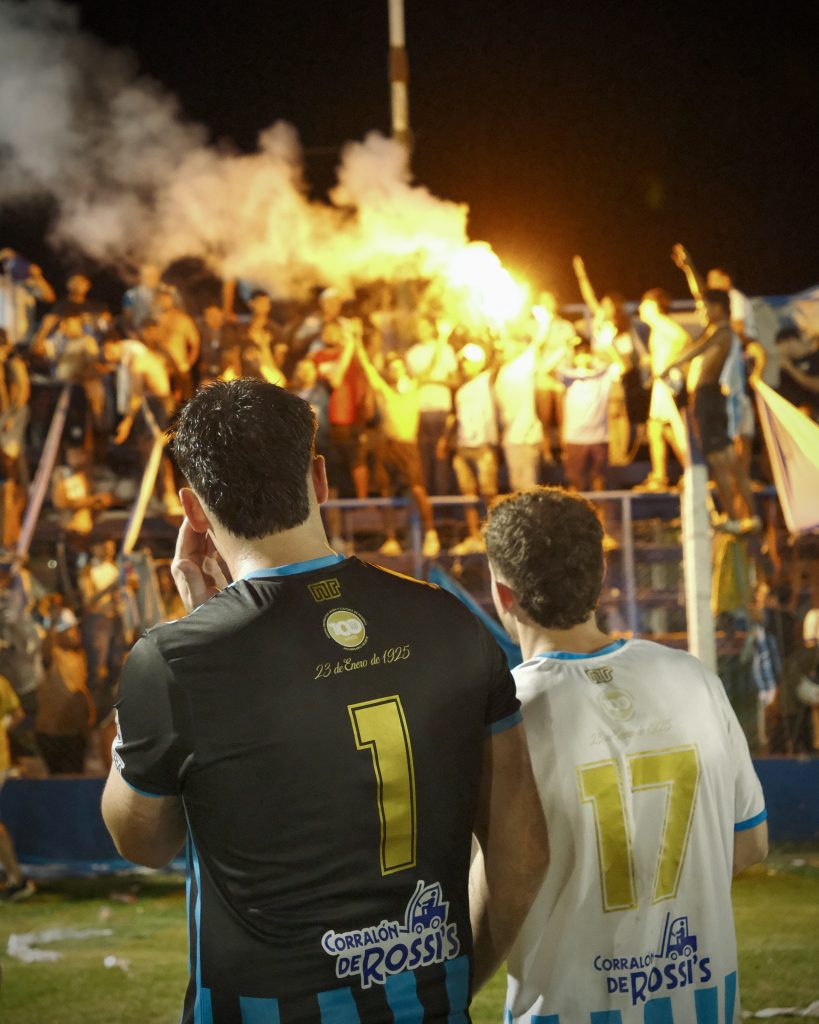
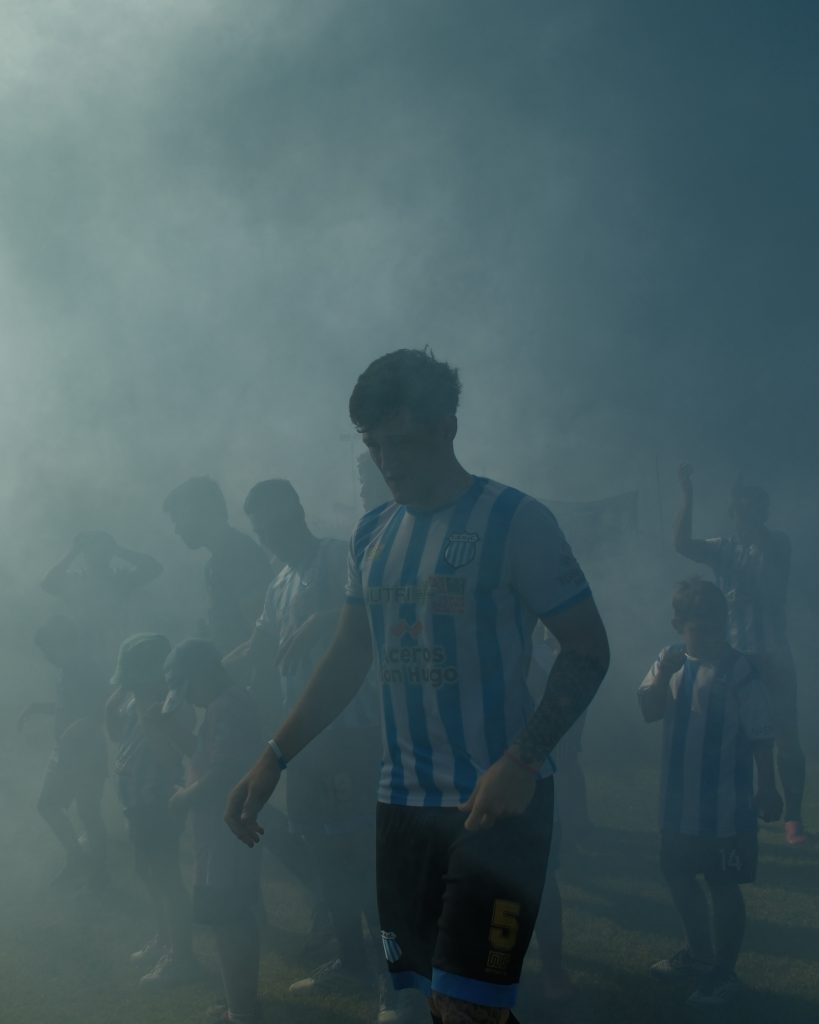

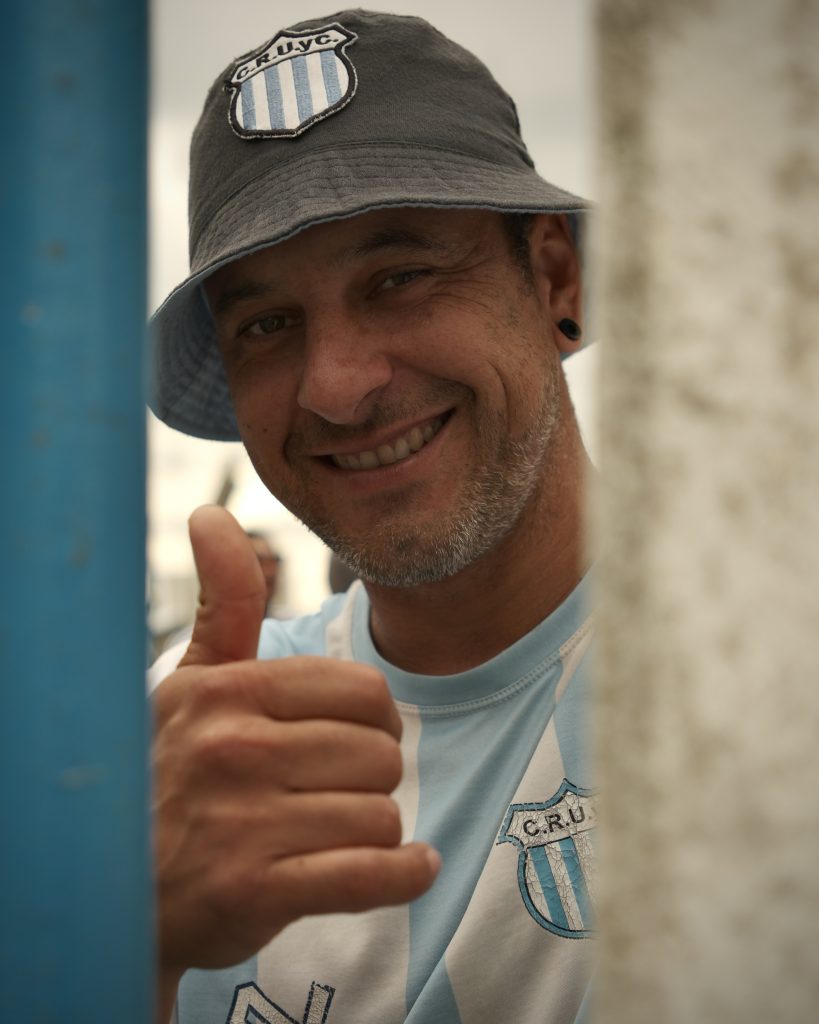
SPANISH
Entrando al pueblo, un cartel marca a fuego que estamos cruzando la puerta del corazón del fútbol. En Murphy nacieron más de quince futbolistas profesionales. No es mito ni exageración. Podría ser algo común en otros lugares, sí, pero acá hay un detalle: el pueblo tiene menos de cinco mil habitantes. Y en esta provincia que vio nacer a Messi y a Di María, la “Cuna del Futbolista Santafesino” —por ley 14.172— es, justamente, Murphy.
Murphy, nombrado así por un terrateniente irlandés en medio de la llanura pampeana, tiene un solo club de fútbol. Uno solo para todos. El Centro Recreativo Unión y Cultura es cancha, punto de encuentro y herencia. De aquí salieron Mauricio Pochettino, Paulo Gazzaniga y una larga lista de jugadores que llevaron el nombre del pueblo más lejos de lo que lo llevaría cualquier mapa.
El 2025 fue un año especial. El Centenario y una tormenta perfecta: una nueva comisión encabezada por ídolos locales; un plantel y cuerpo técnico con un noventa por ciento de jugadores del propio pueblo; y una hinchada que no entiende de medias tintas, con “Los Pingüinos” al frente. Todos empujando un camino que devolvió a Unión y Cultura a la final de la Liga Venadense después de dieciocho años.
No alcanzó para el título, pero esa es otra historia. A veces las gestas no saben de trofeos, y a veces los trofeos no tienen forma de copa. ¿Hay algo más poderoso que la ilusión de ver a un pueblo entero sosteniendo a un club que es pueblo… o a un pueblo que es club?
En Argentina el fútbol se vive de una manera especial, eso ya lo sabemos. Pero en Murphy, el fútbol es aún más: es identidad. Decir Murphy es decir Unión y Cultura. Y es sentir cómo el corazón se llena de ilusión, una vez más.
All words and images by Pedro J Caffa.
You can visit Pedro on Instagram here.

All words and images by Jonas Zöller
“Catching the last glimpses of the fading floodlights in the distance.“
It began, as so many journeys do, with football — but quickly became something else entirely.
Across South America, the game became Jonas’s entry point: a reason to wander, to ask questions, to follow floodlights into unfamiliar neighbourhoods and cities. Stadiums turned into landmarks, fixtures into excuses, and matchdays into moments of connection. What unfolded, slowly and unexpectedly, was not just a record of football grounds visited, but a diary of places, people, and passing feelings.
From vast concrete bowls to hillside stadiums carved into neighbourhoods, each stop revealed its own identity — from Chile to Argentina, and finally Brazil, where the journey draws to a close. There were nights when the noise felt endless, afternoons when the sun baked the stands into stillness, and countless conversations shared with strangers who needed no common language beyond the game. Football, in all its contradictions, opened doors — to generosity, to history, to joy, and sometimes to discomfort.
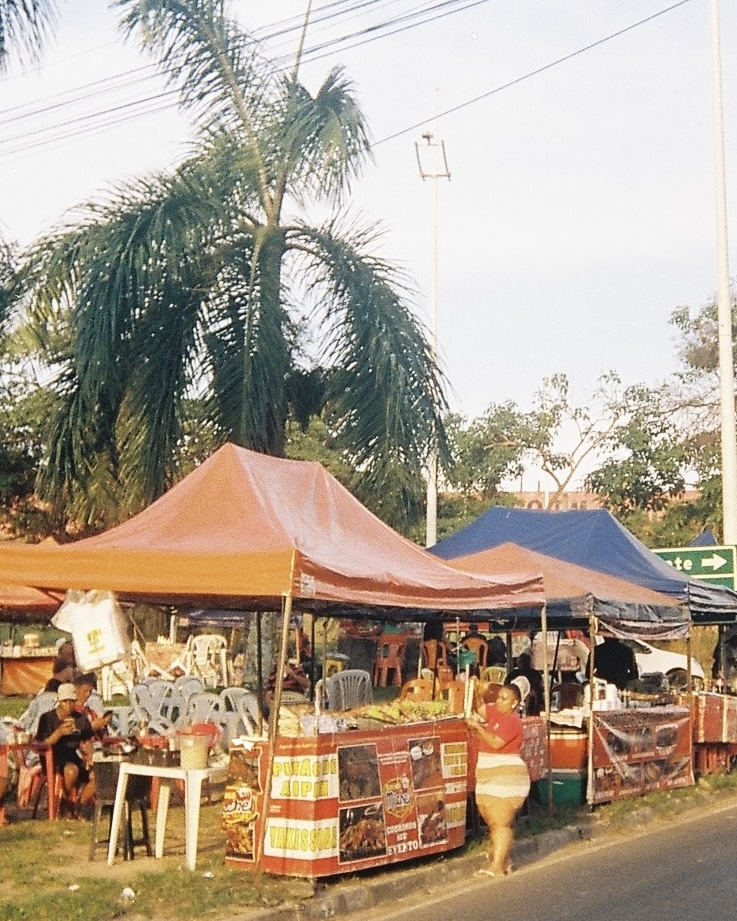
The journey was never just about romance. It carried the weight of South America’s past and present: colonial legacies etched into city centres, inequality visible long before kick-off, and the uneasy presence of modern football creeping into places that once felt untouchable. Somewhere between beauty and brutality, the game reflected the continent itself — emotional, communal, chaotic, and deeply human.
And then, almost without warning, it was coming to an end.
The final chapter unfolds in Salvador, on the last night before returning home. A day of hesitation and doubt, of resisting the pull of football altogether — before giving in one final time. One last stadium. One last set of floodlights. One last reminder of why the journey mattered in the first place.
This is not a conclusion, but a quiet landing. A moment of reflection beneath fading lights, where the journey’s many threads — football, trust, unease, connection, and belonging- briefly come together. The South American Diaries end not with a grand statement, but with a familiar feeling: standing in a stadium far from home, feeling exactly where you’re meant to be
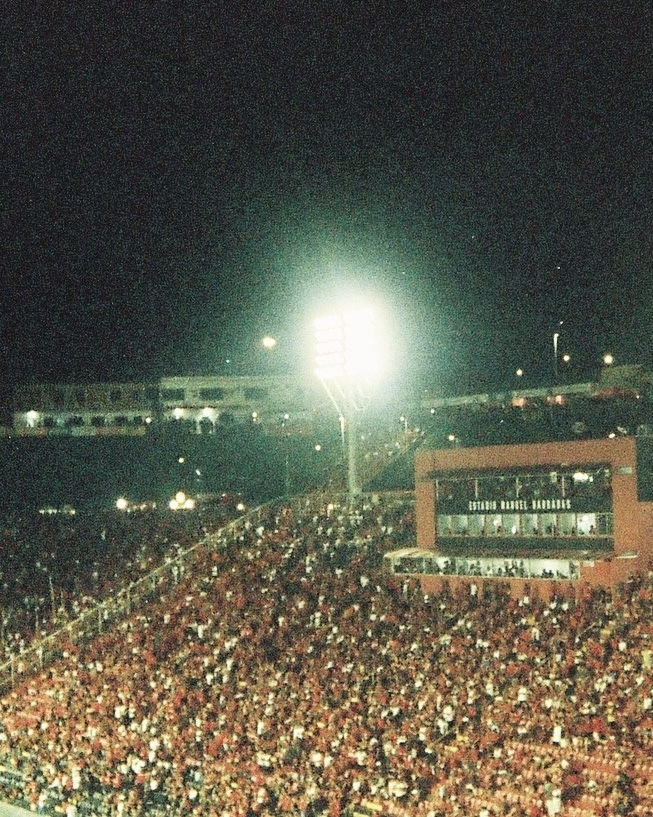
A Final Day in Salvador
Wednesday. It’s our last day in Salvador before we head back to cold Germany.
The day before, we experienced the brutal beauty of Brazil’s north one final time on Ilha de Itaparica. The island, with its white beaches and blue water, felt almost like a postcard version of everything we’d seen over the past weeks.
Maybe that trip left me a little too relaxed. Maybe it’s the many colourful colonial buildings and former mansions in Salvador that keep reminding me of the role white Europeans once played here, and how strongly that past still shapes the city today. But somehow, today, I don’t really feel like football. The match I had in mind is a bit outside the city, and once again, buying a ticket in advance isn’t possible.

Doubts, Decisions, and Modern Football
I argue with myself, weigh the pros and cons, and probably take out my phone twenty times to Google the stadium and the club. The decision finally falls in one of the souvenir shops, when I spot yet another Manchester City logo hidden among the EC Bahia merchandise. A quick search confirms what I already fear: the club is 99% owned by the City Group.
Thankfully, during my visit to Arena Fonte Nova, I didn’t notice any signs of the takeover yet — but I immediately felt connected to their city rivals, Vitória. My dislike for modern football and its multi-club ownership runs too deep.
So I decided to visit Barradão. One last match on this journey under Brazil’s floodlights. The thought is too tempting.
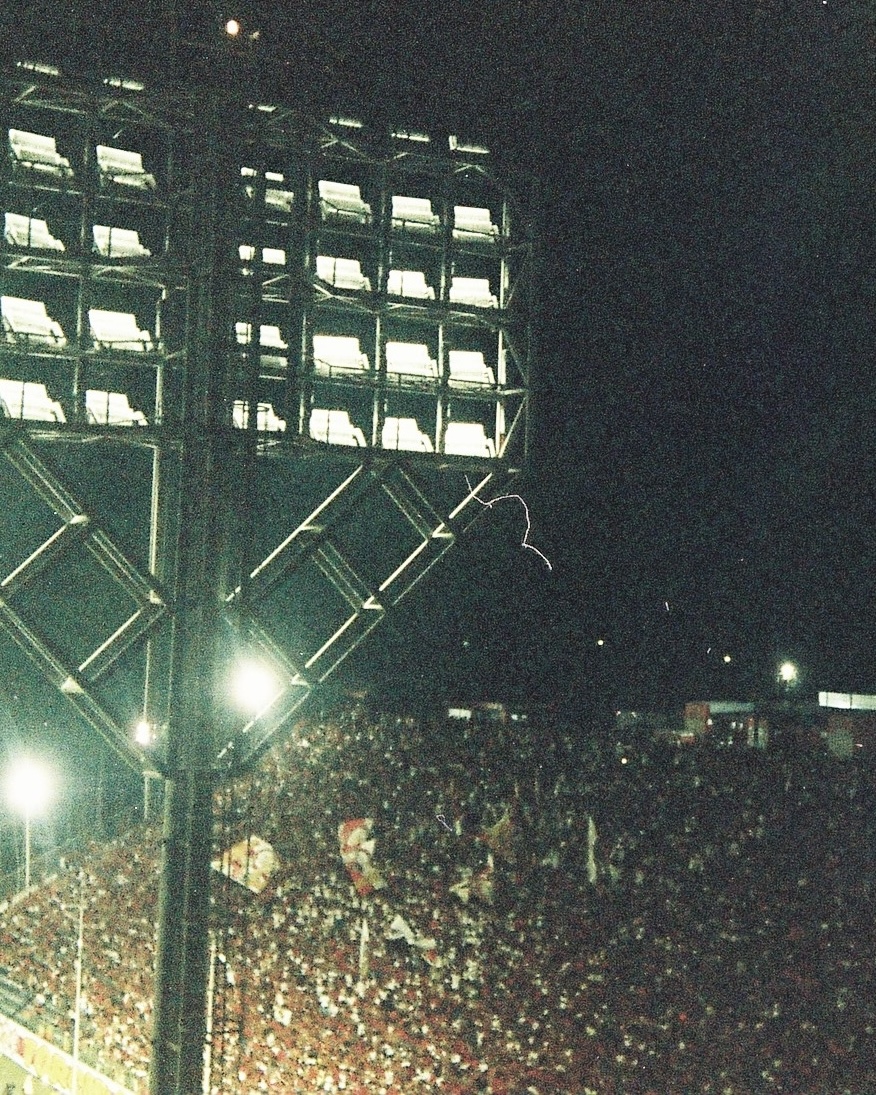
On the Way to Barradão
On the drive there, I feel uneasy at first. The stadium seems to sit right in the middle of a favela. At the same time, I’m annoyed at myself for this inner unrest. If South America has taught me anything over these weeks of football, it’s friendliness and helpfulness from complete strangers. I have no reason to feel unsafe, and I owe the people here my trust.
A little later, that trust is confirmed again at the ticket counter. As before, the process for foreigners seems absurdly complicated, but the guys and girls working there take care of me with almost touching dedication. Soon after, I’m holding my (digital) ticket.
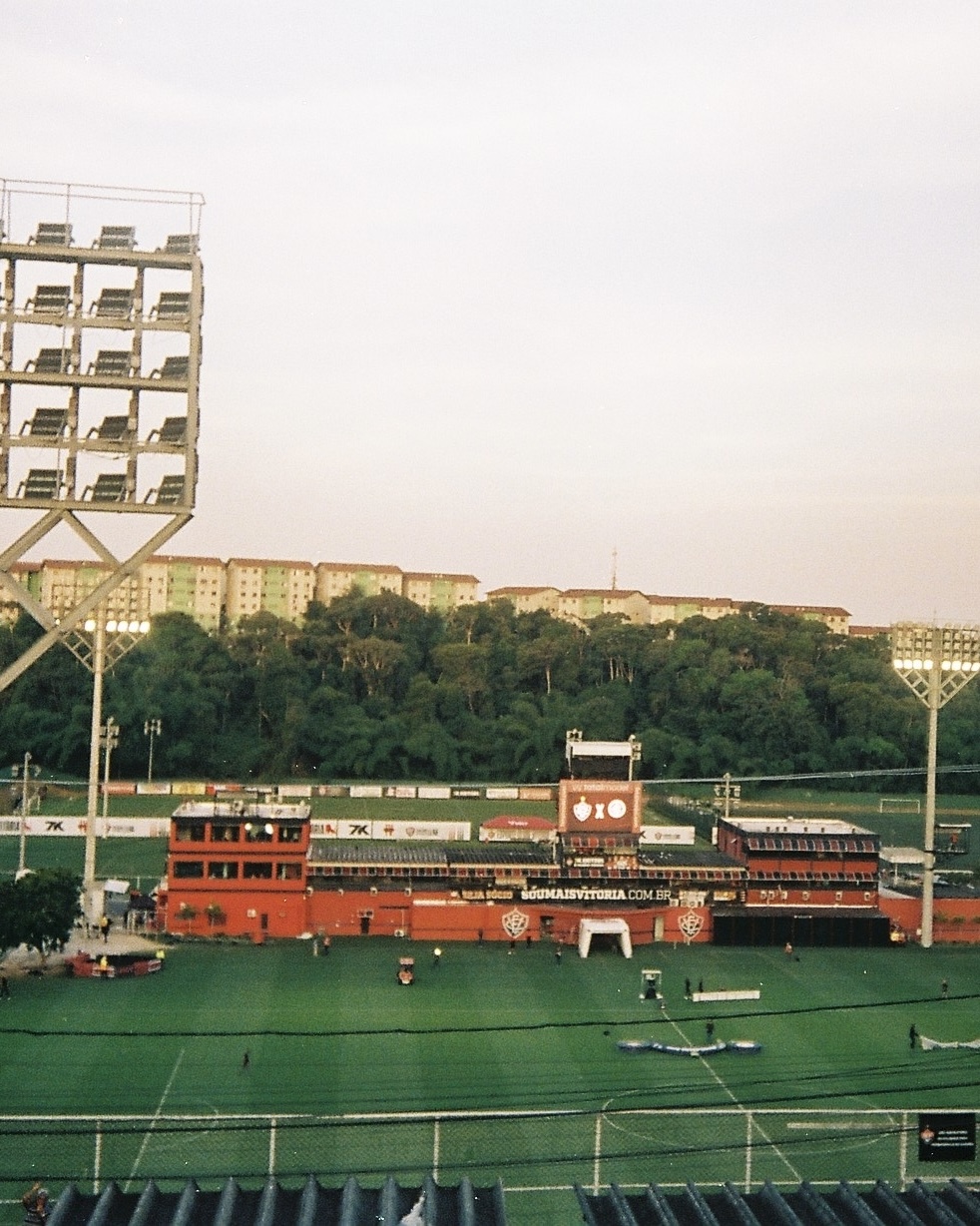
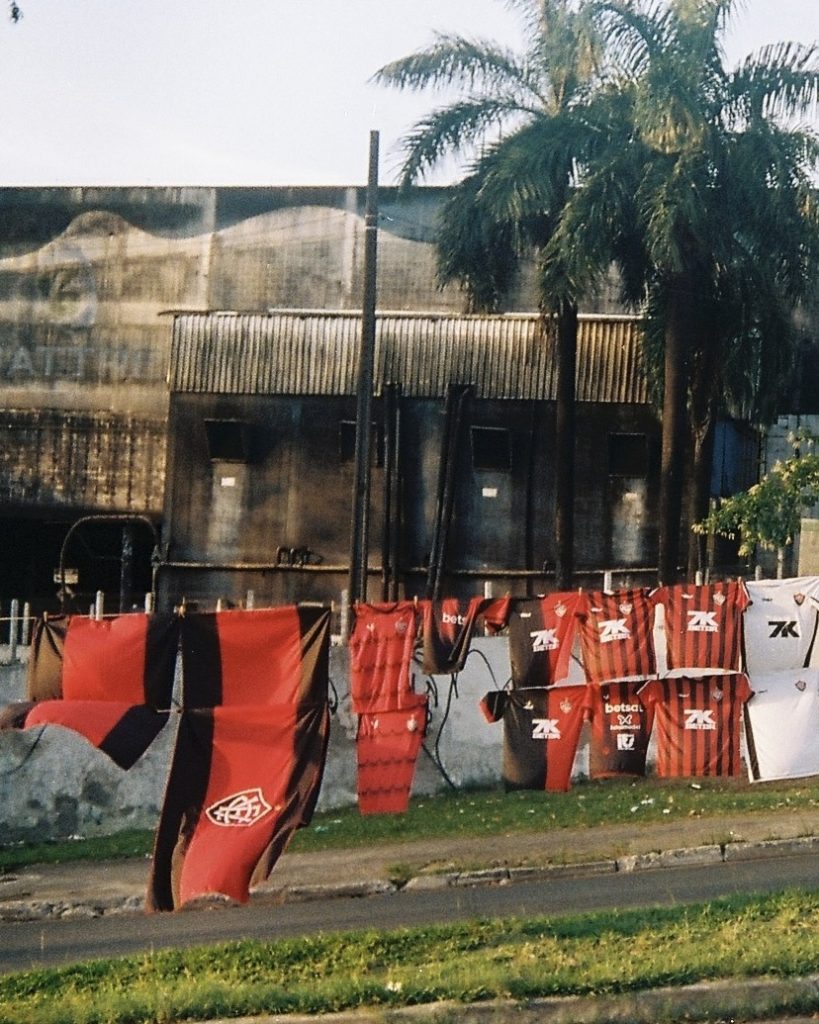

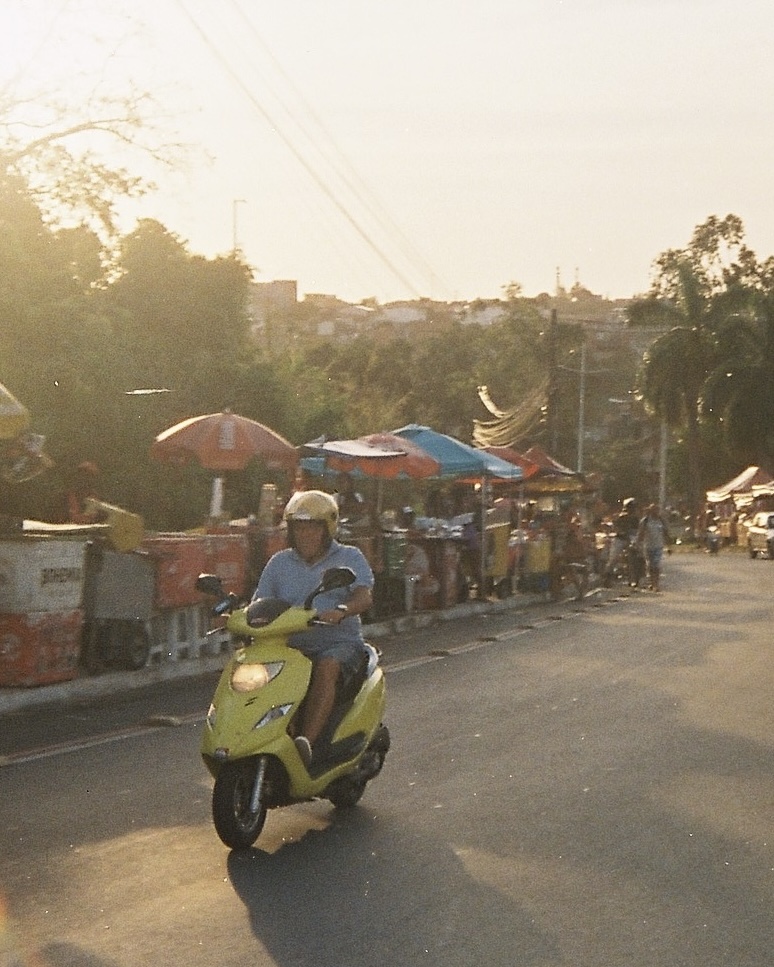
When the Stadium Reveals Itself
I take one last lap around the stadium, shoot a few photos of the street vendors, and pass through the turnstiles just as the sun begins to set. What I see when I step inside hits me within a fraction of a second — that same rush of happiness I’ve felt so many times in South American stadiums.
The pitch lies a hundred metres below me in a deep basin. Three stands are flanked by picture-book floodlights and look as if they’ve been carved directly into the surrounding hills. The stadium is still empty, so I wander around.
When I stop to take a few photos, someone approaches me quickly. Within minutes, I’m nerding out with a Vitória fan about football. I’ve had this thought a few times on this trip, but here it hits particularly hard: being 12,000 kilometres from home and sharing a passion with someone I’d never met before.

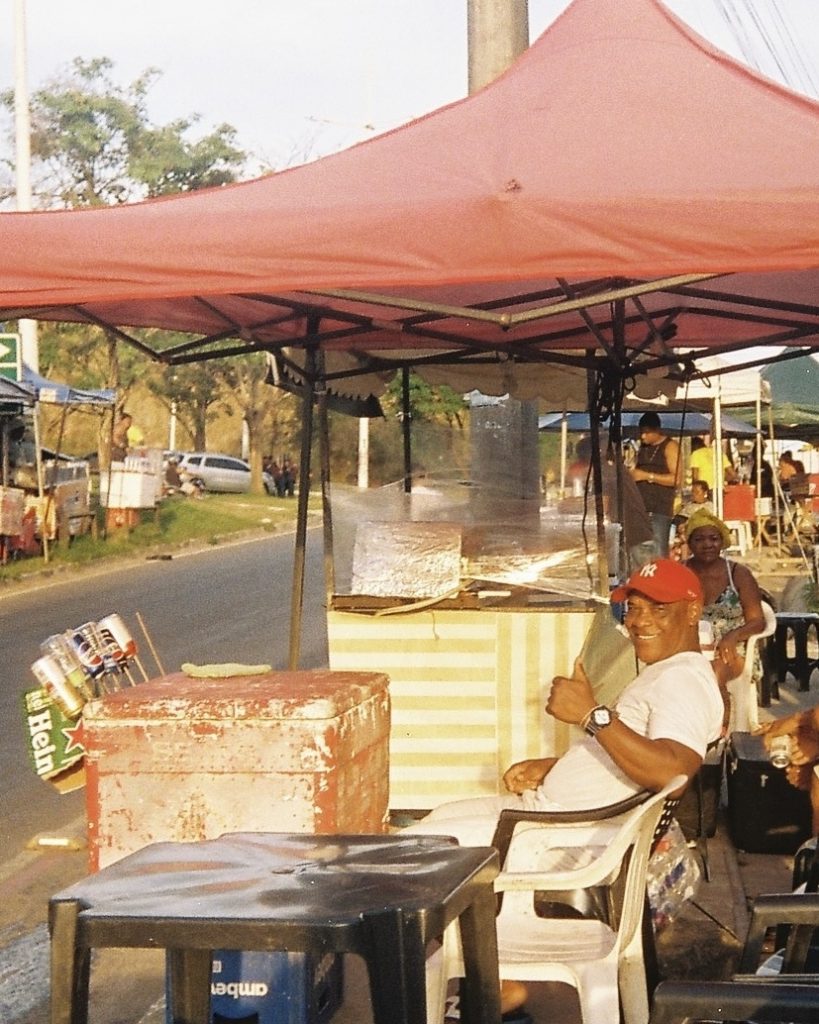
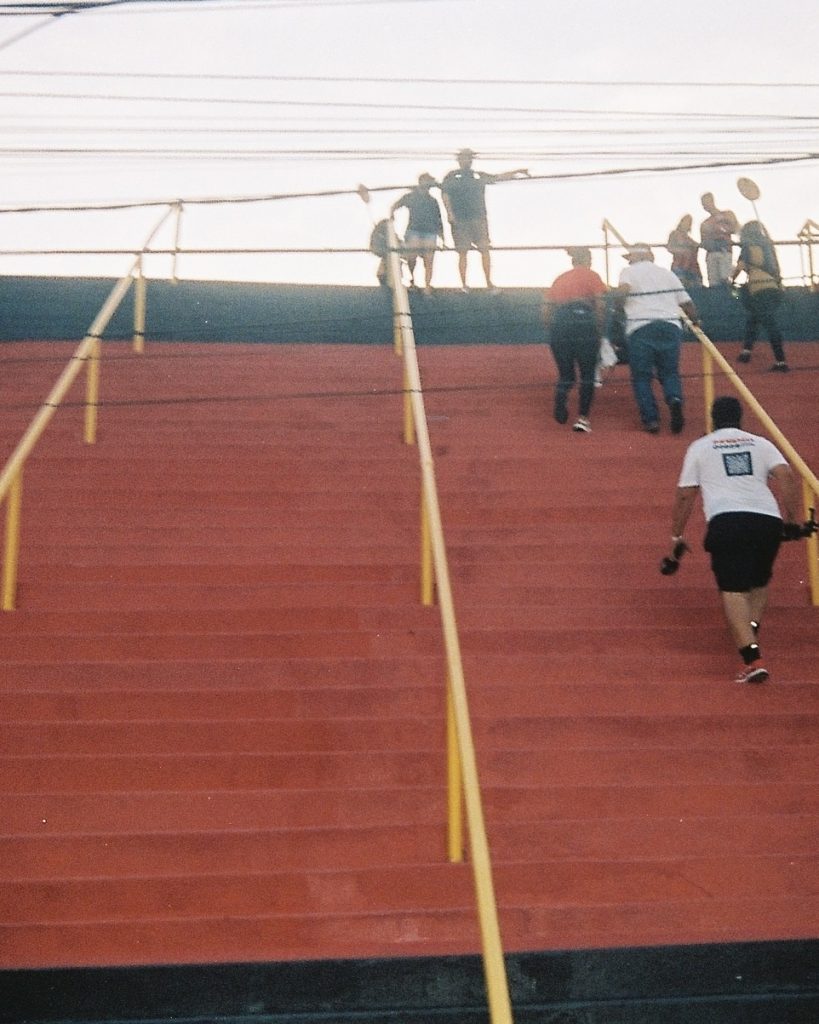
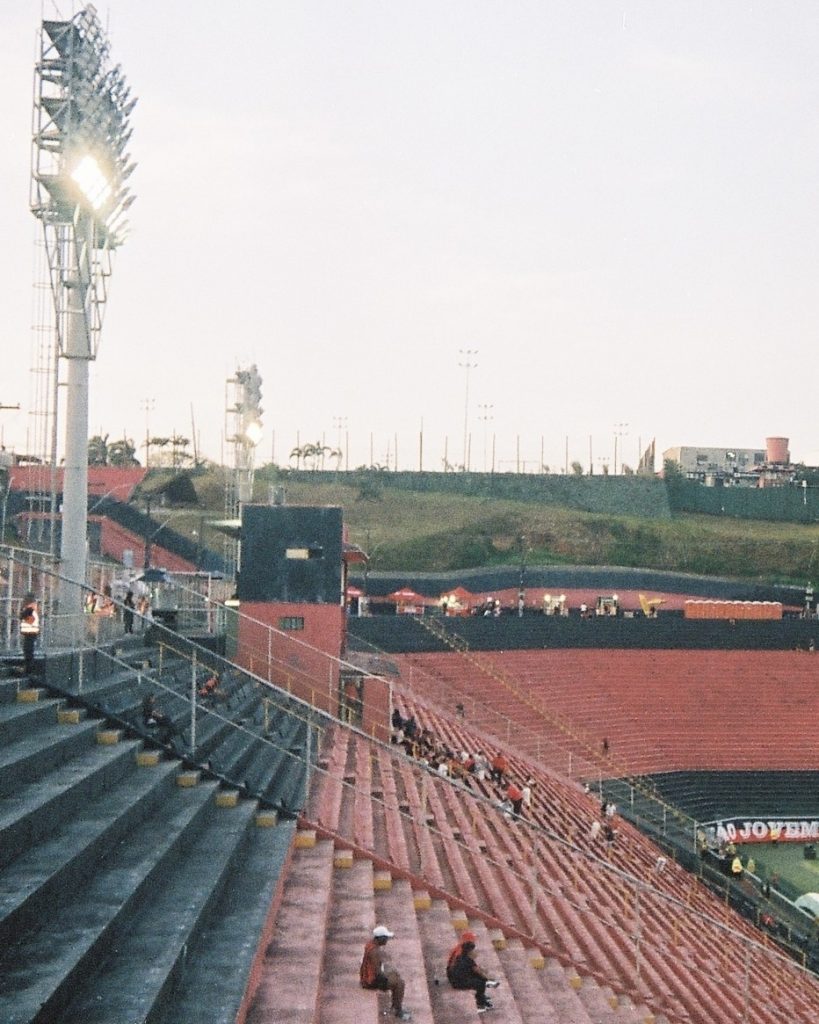
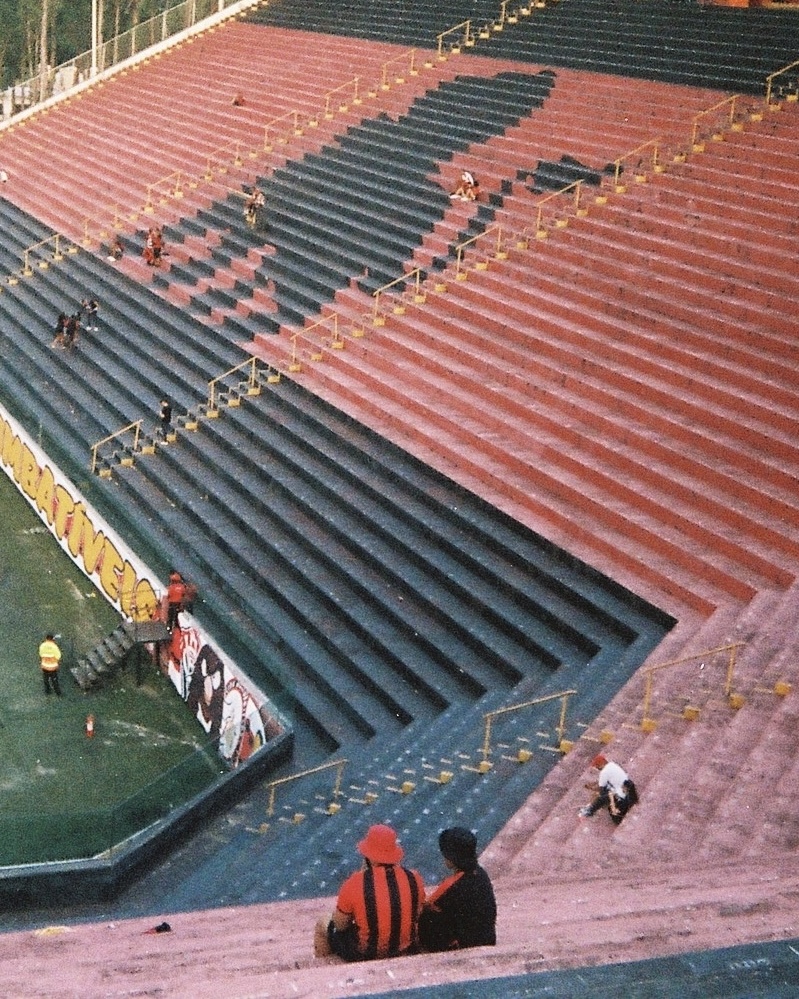
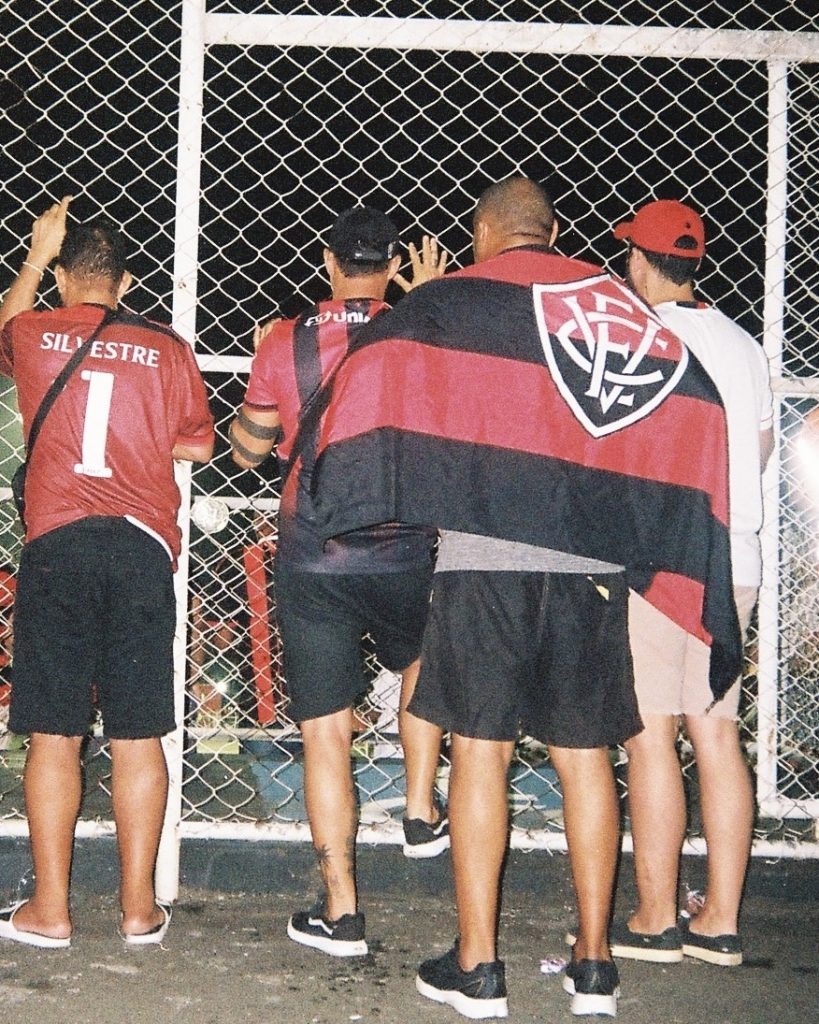
Unease in the Stands
The stadium fills slowly, but even after kick-off, the stream of people moving down the steep stairways doesn’t seem to stop. It must be the 20th or 30th minute before the stands finally reach full capacity. Even then, the place feels like it refuses to settle.
There’s constant movement between the stands and the endless food stalls, and I start to realise that the sporting situation plays a role too. Vitória are sitting in the relegation zone and playing poorly, despite desperately needing a win. The crowd grumbles and murmurs, waving arms and shaking heads with every misplaced pass.
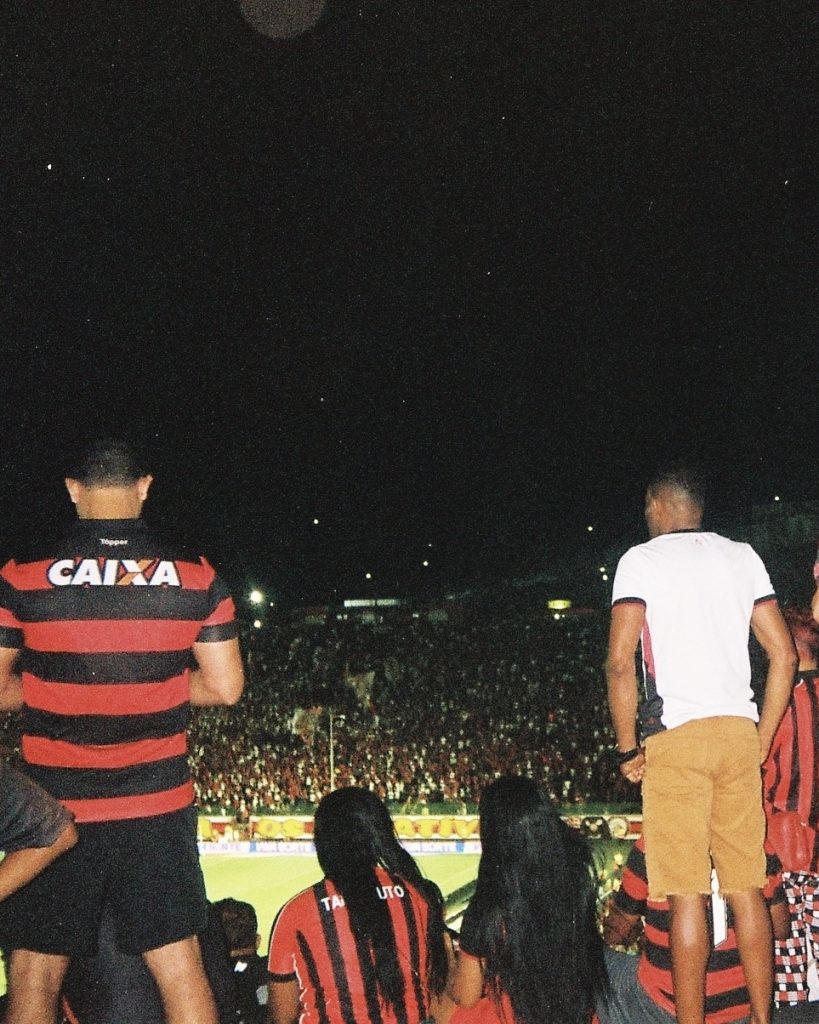
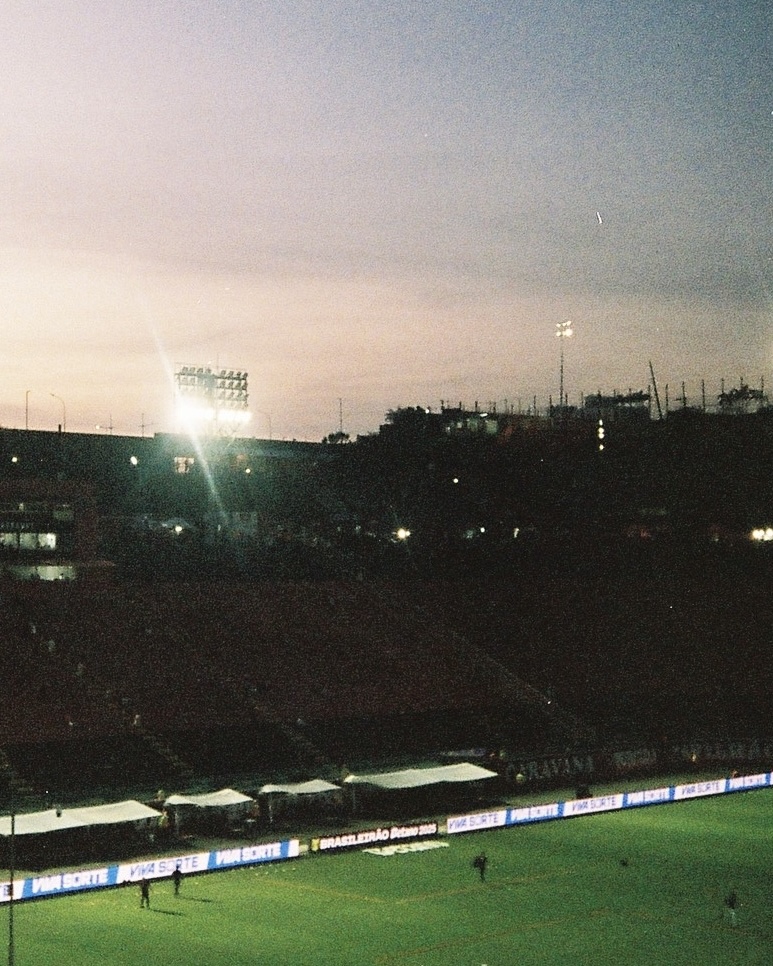
Ecstasy Under the Floodlights
The unease carries deep into the second half, until the redeeming 1–0 finally arrives. The sky above the torcida seems to explode as hundreds of flying beer cups catch the floodlights, and suddenly the tense atmosphere bursts into pure ecstasy.
I catch myself sharing the crowd’s collective relief as the referee blows the final whistle, and I make my way out.
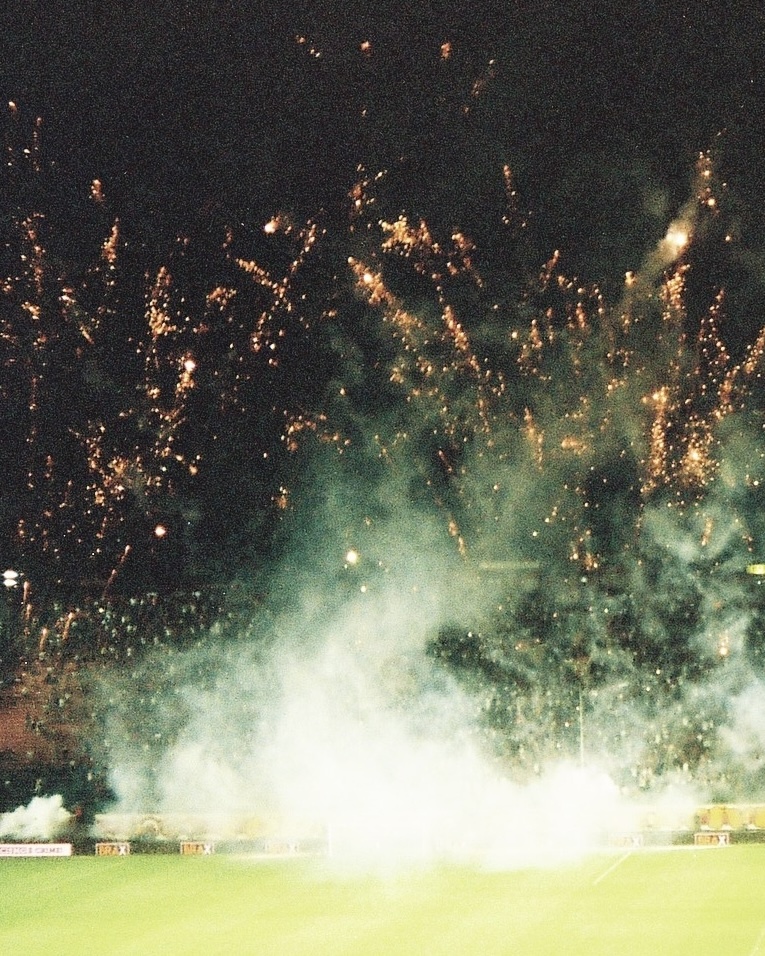
The Long Way Back
Caught in the thick traffic around the stadium, I retreat into my own thoughts. The visit to Vitória hits me with the full force of South American football romanticism. My mind jumps between memories from the past months, and a warm sense of contentment rises as I step into the final stadium Uber of my journey — catching the last glimpses of the fading floodlights in the distance.
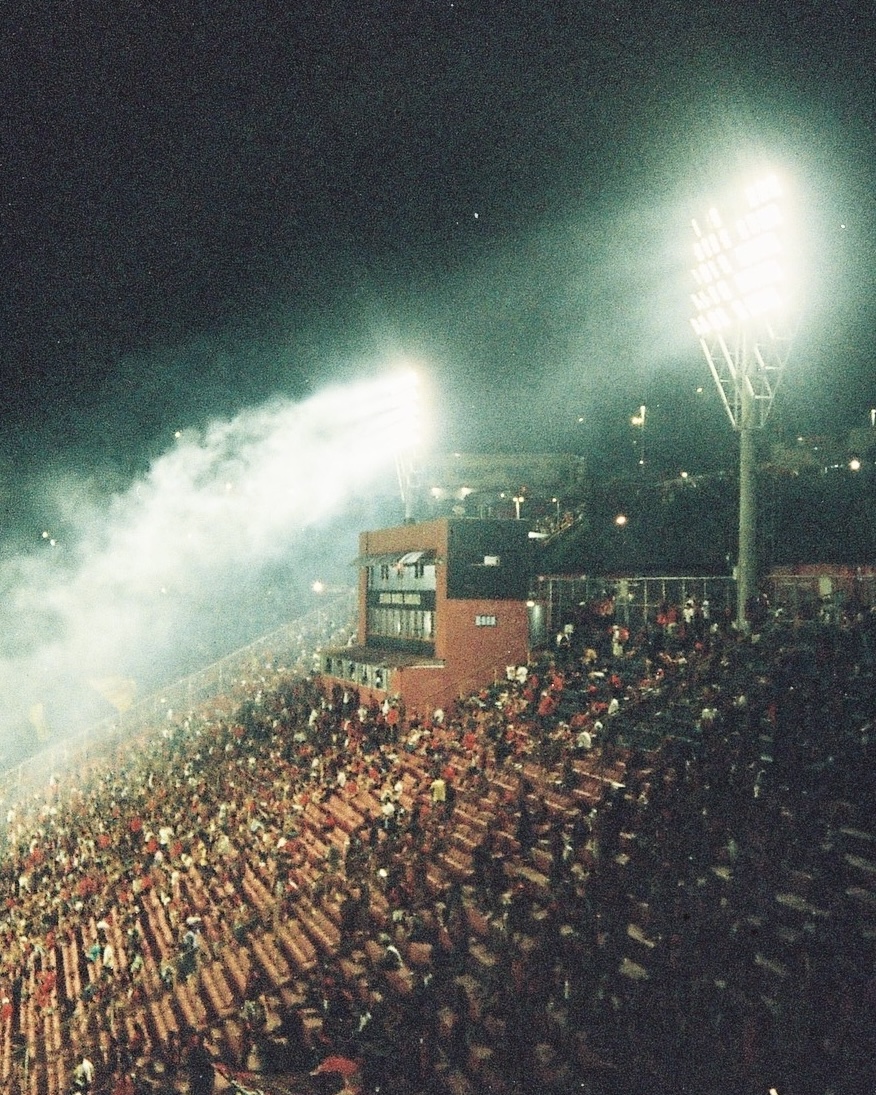
You can follow Jonas on social media by clicking here

There are clubs you follow for trophies, and clubs you follow because they feel real. US Pergolettese sits firmly in the second category.
Based in Crema, in the flat heart of Lombardy, Pergolettese are a proper provincial football side. No glamour, no illusions. Just football that means something to the people who turn up every week.
They play in Serie C, Italy’s third tier, a division where nothing comes easy and everything has to be earned. That suits Pergo just fine.
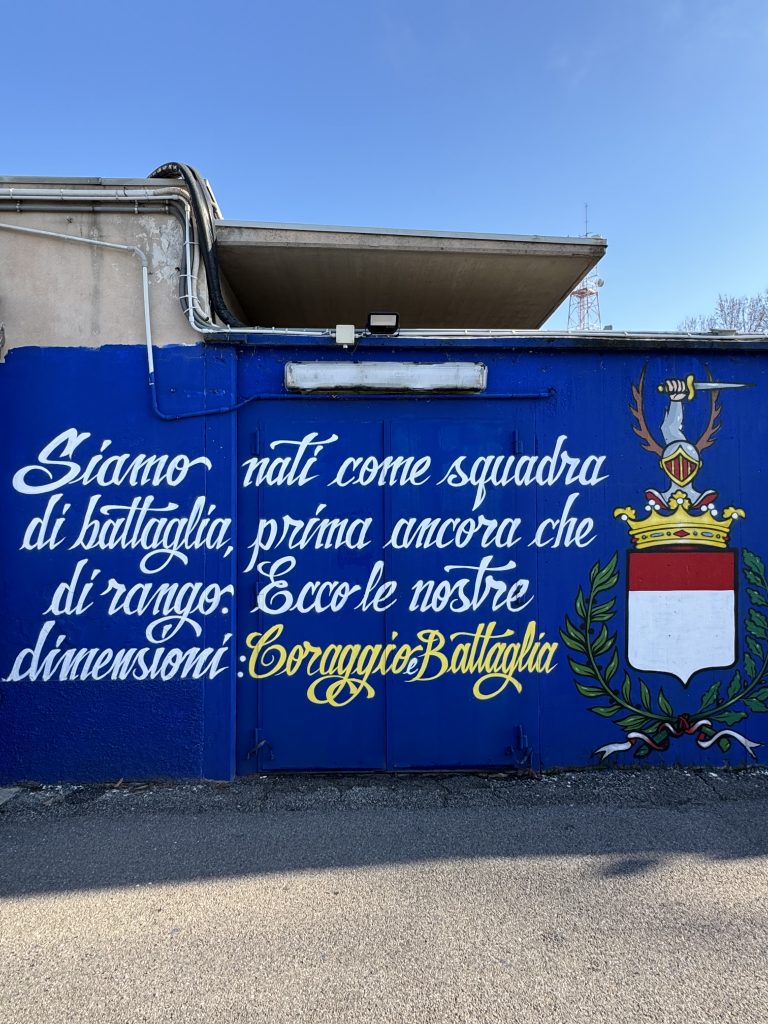
From Pergoletto to Pergo
Football in Crema officially started in 1932, when the club was founded in Pergoletto, a suburb of the town. Over the years, the name changed, Pergolettese became Pergocrema, but the identity stayed the same: local, stubborn, and proud of it.
There were highs. Winning Serie C2 in 2007–08 and finishing 11th the following season remains the best result in the club’s history. There were also lows. In 2012, financial problems caught up with Pergocrema and the club went bankrupt. Doors shut. Silence followed.
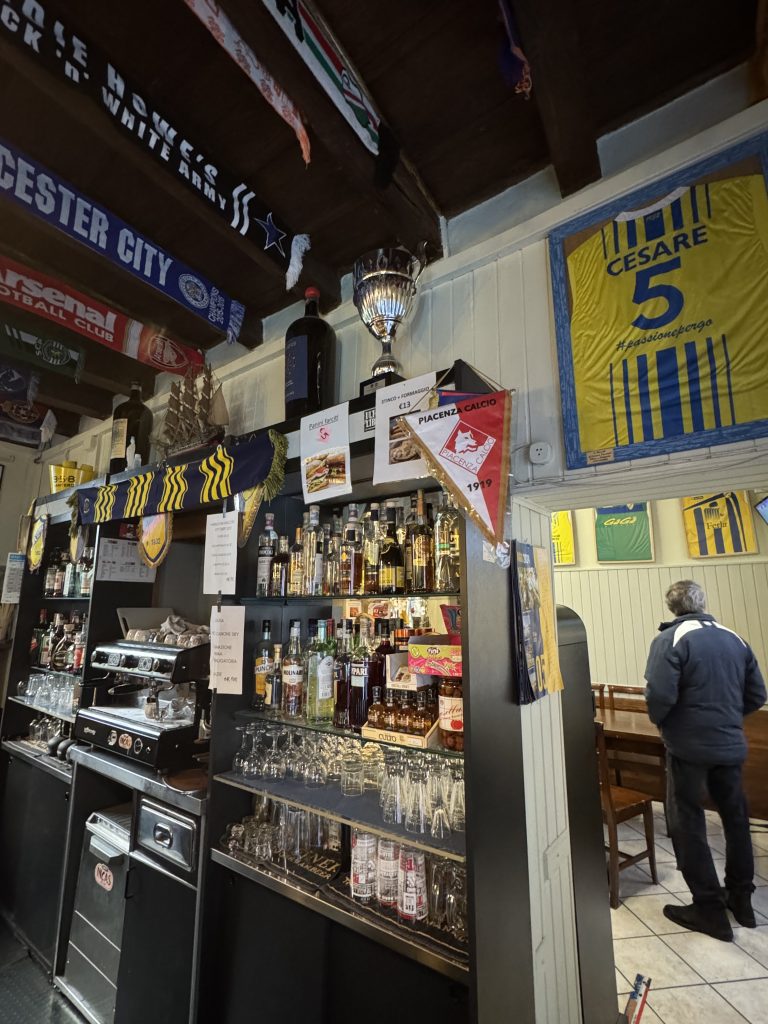

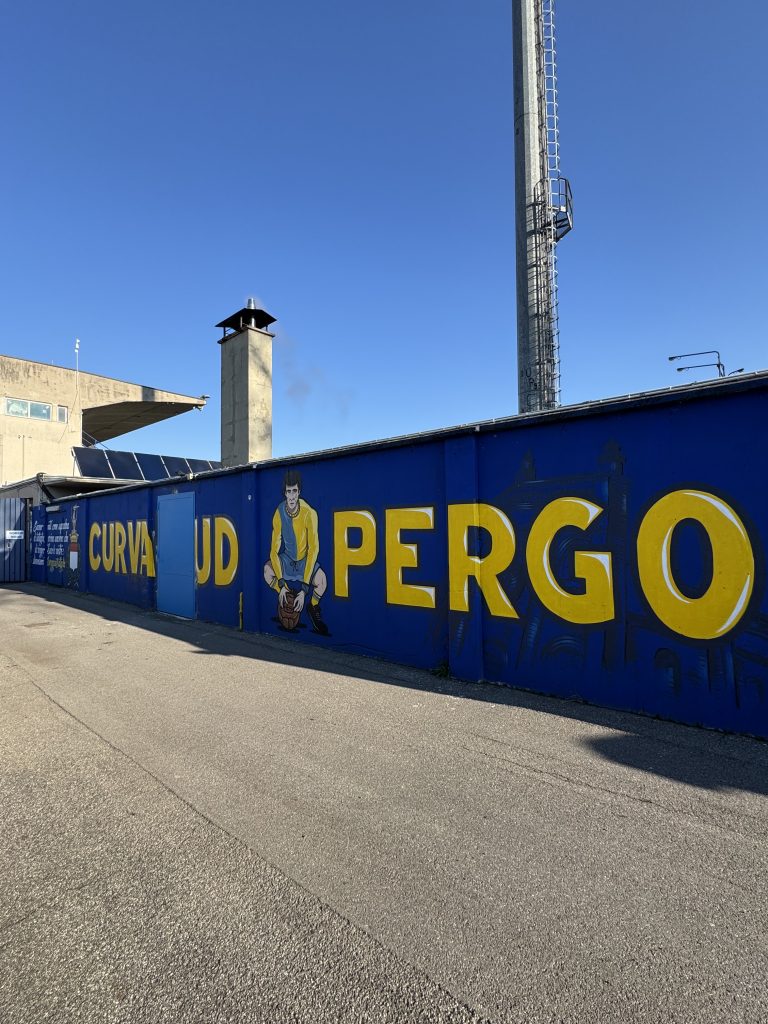
But football in places like this doesn’t just disappear.
A year later, the title of Pizzighettone moved to Crema, the name US Pergolettese 1932 returned, and the story carried on. Promotion followed, and by 2019, Pergo were back in the professional game, this time holding their own against clubs with far bigger names and budgets.
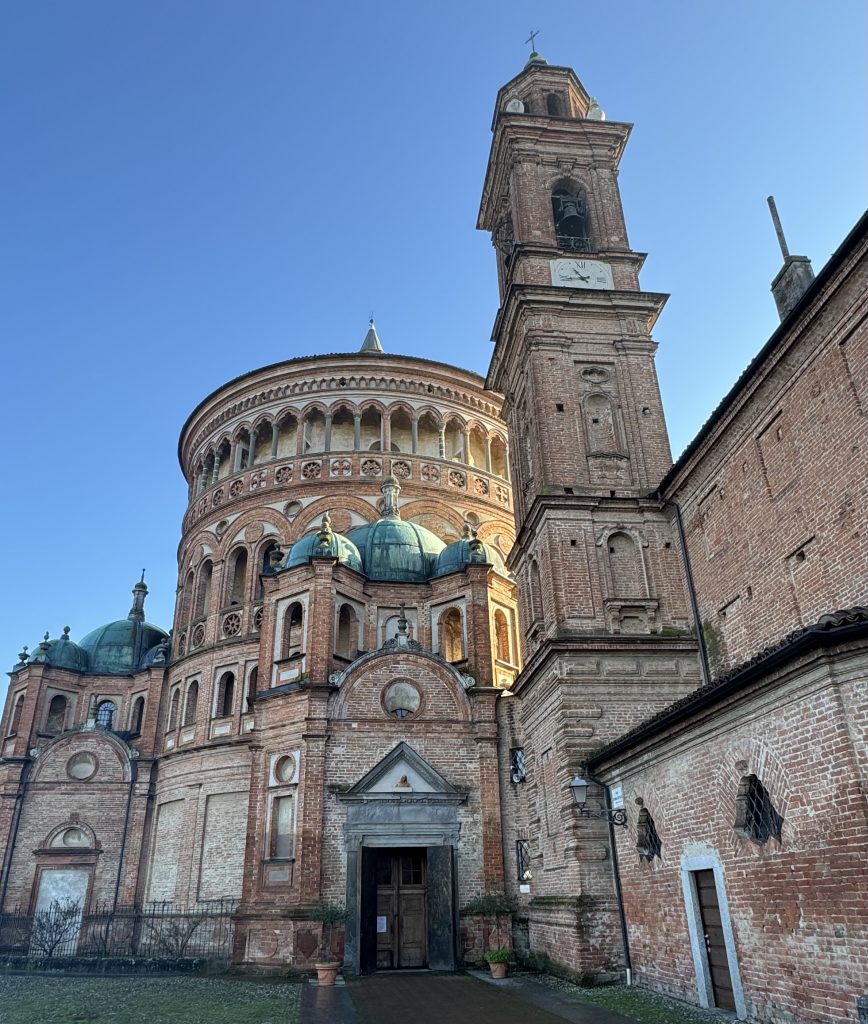
The Cannibals
Pergolettese are known as I Cannibali. It’s not a nickname dreamed up by a marketing team. It comes from how they play.
This is football built on physicality, pressure and refusal to back down. They don’t try to outplay you. They don’t pretend to be something they’re not. They get close, they make it uncomfortable, and they keep going until you crack.
Small ground. Tight pitch. Fans right on top of you. Away teams know they’ve been somewhere after a visit to Crema. Around here, football has always been more of a contest than a performance.
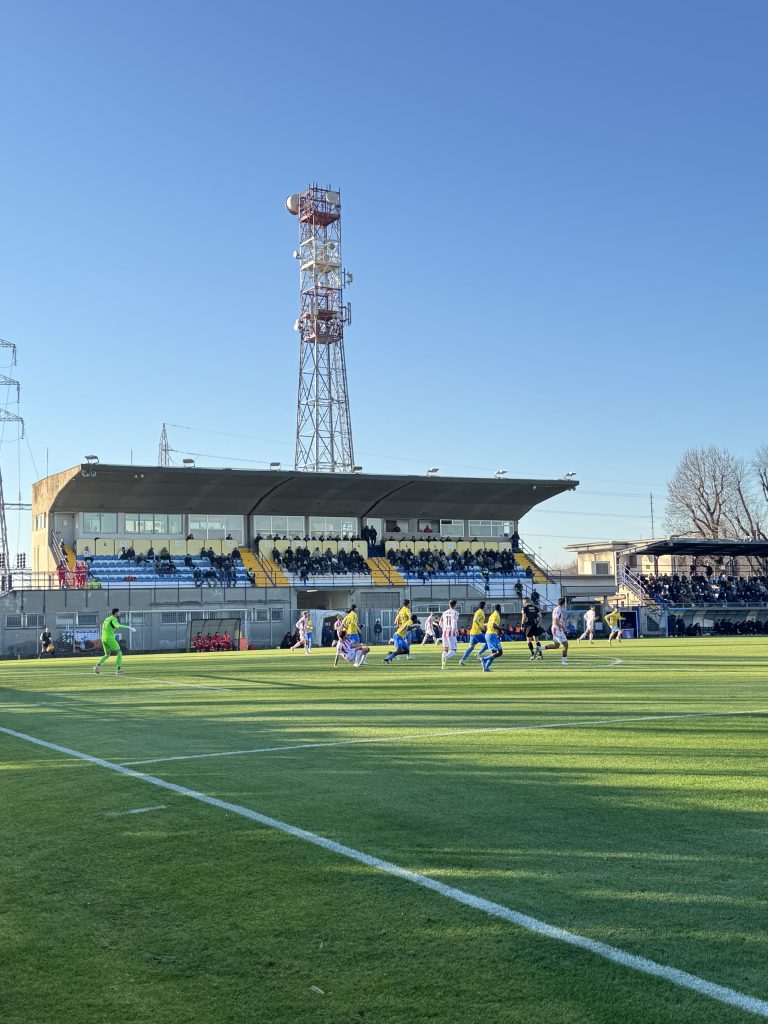

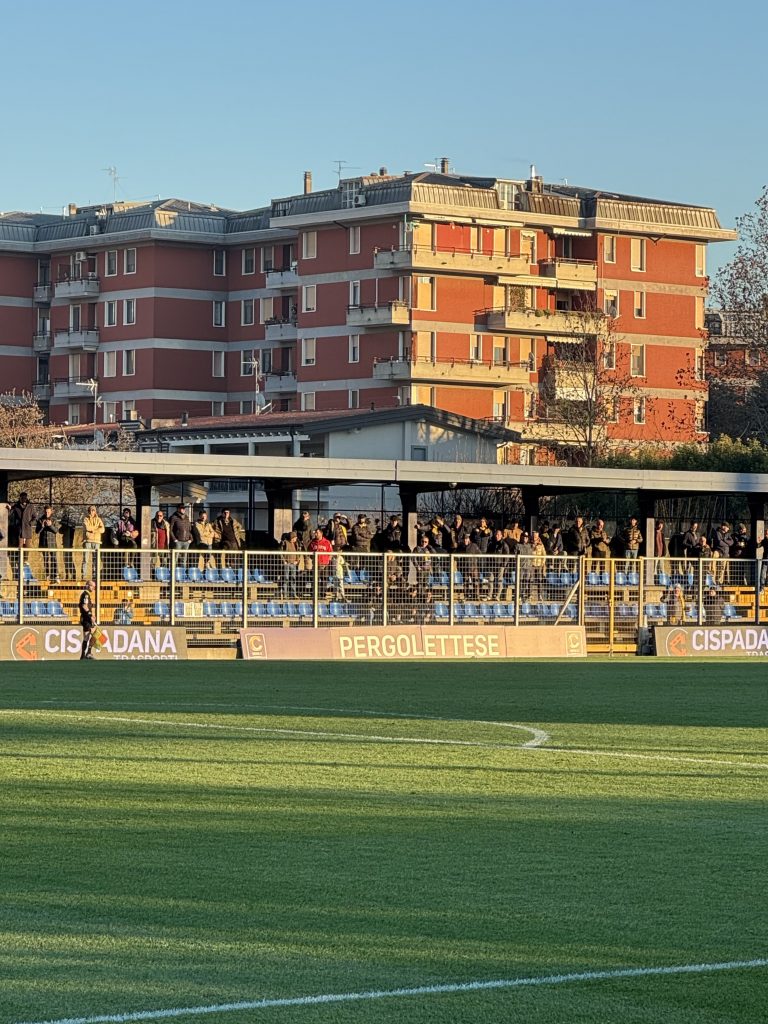
The Stands and the City
Pergolettese share the Stadio Giuseppe Voltini with city rivals AC Crema, which only adds fuel to the local derby. Rivalries with Mantova, Pro Patria, Lecco and others run deep, while friendships with Piacenza supporters and even Union Saint-Gilloise fans show how these connections stretch well beyond Lombardy.
Crema itself often surprises people. It’s best known internationally for Call Me By Your Name, filmed among its streets and piazzas, but there’s more here than cinema tourism. Agriculture, cheese, small industry and a strong sense of local identity define the town.
And then there’s the food. Tortelli cremaschi — sweet, stuffed pasta that confuses first-timers — alongside salva cheese, winter dishes like pipèto, and pastries that belong to this place alone. Matchday doesn’t end at the final whistle. It spills into cafés, bakeries and late conversations.
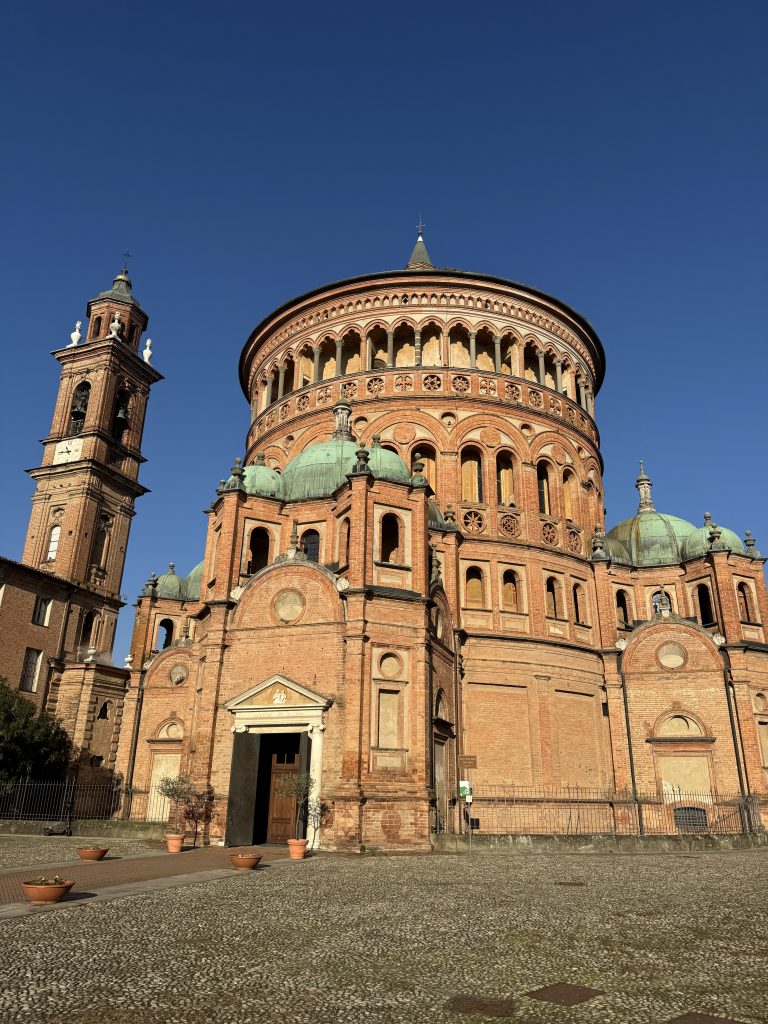


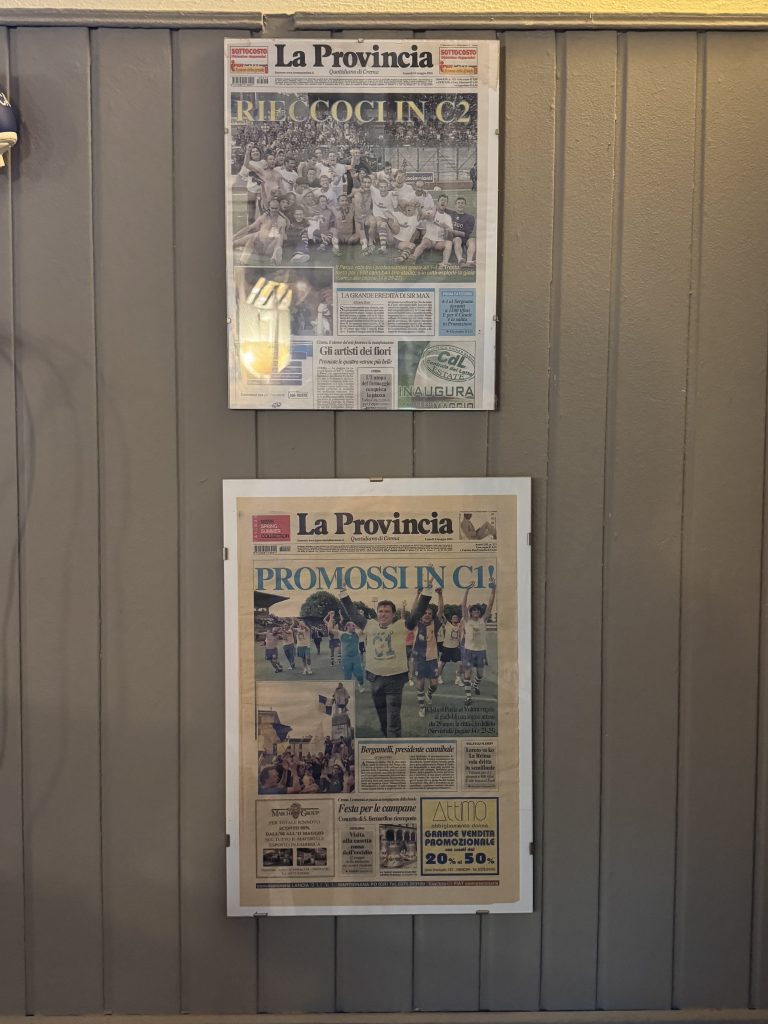
Today’s Pergolettese
The current squad is exactly what you’d expect from Pergo: experienced Serie C heads, younger players on loan from bigger clubs, and a core that knows what it means to play here. Captain Mariano Arini sets the tone, while the team continues to lean into that Cannibals’ reputation — organised, intense and difficult to beat.
They’re not chasing fairy tales. Survival, stability and pride come first.
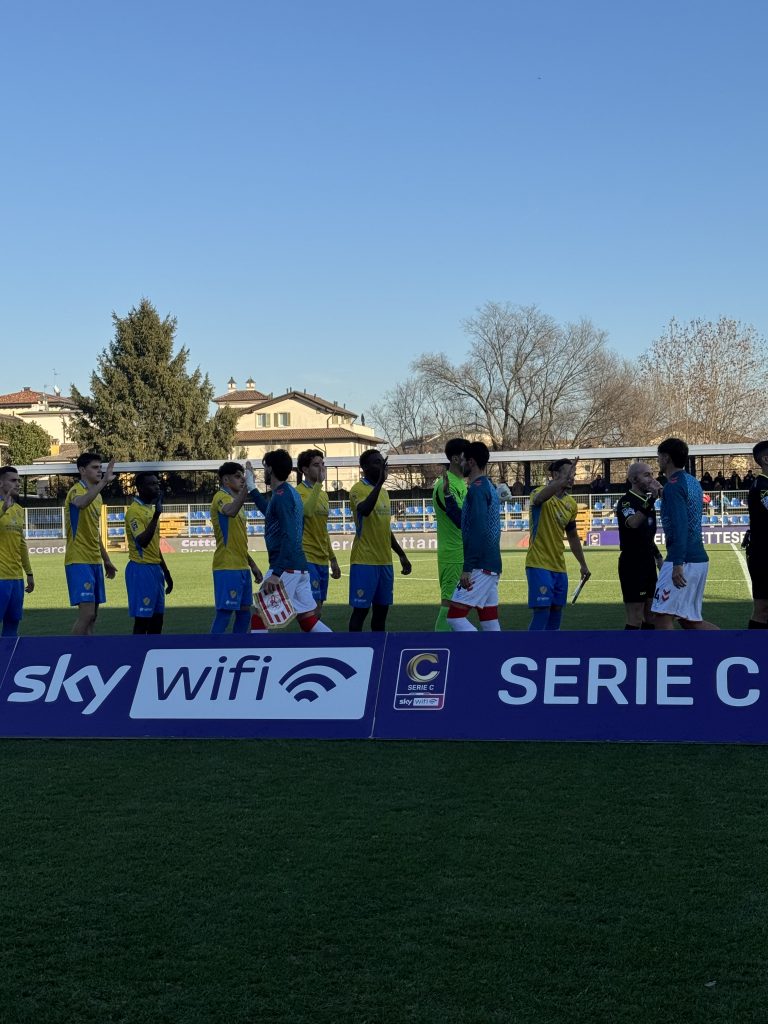
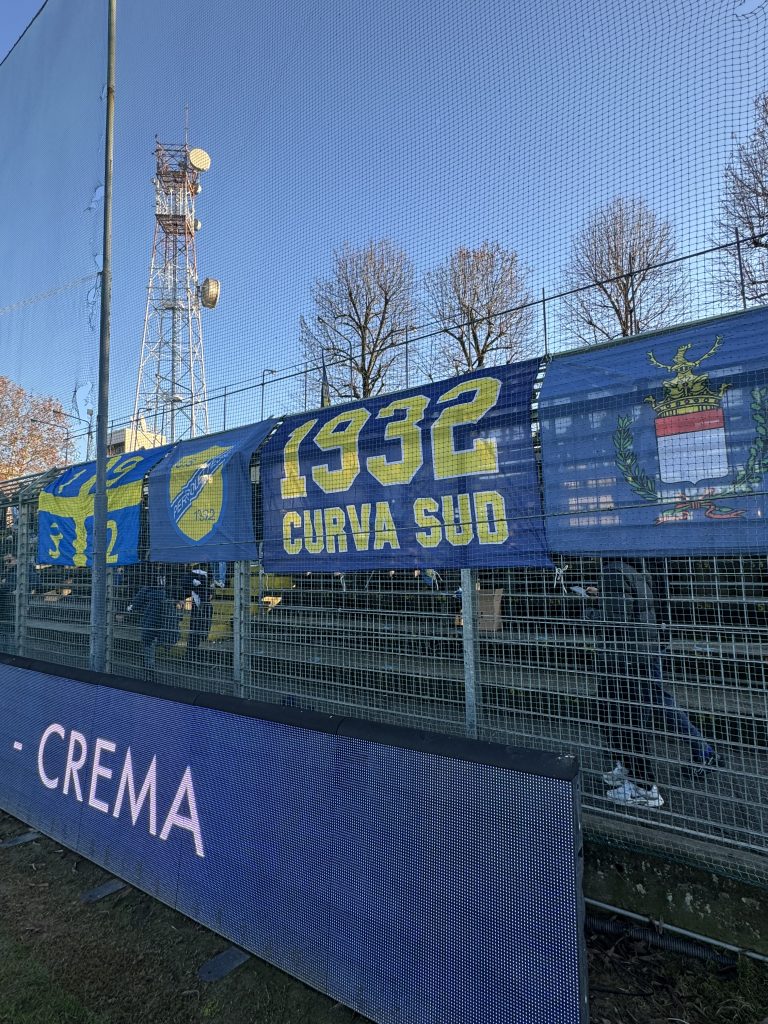
Why Pergolettese matter
US Pergolettese won’t dominate headlines. They won’t trend online. But they represent something essential about Italian football: community clubs, rebuilt after failure, still standing because people care enough to keep them alive.
In Crema, football isn’t about status. It’s about turning up, backing your side, and knowing exactly who you are. Pergolettese know that better than most.

All our thanks to Luca Gaiera and U.S. Pergolettese 1932
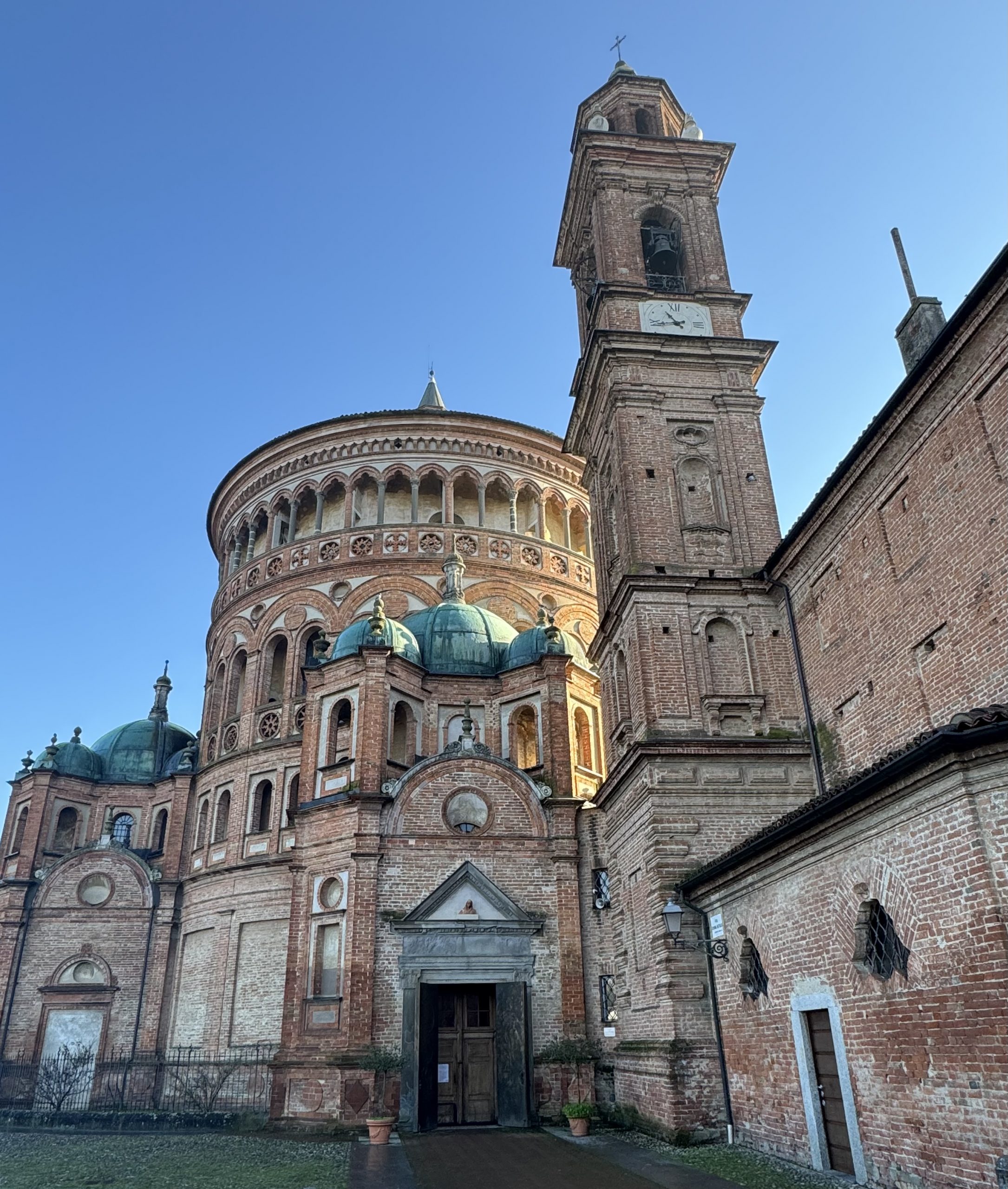
Some clubs are inseparable from their cities. Others are their cities. In Pelotas, in Brazil’s southernmost state of Rio Grande do Sul, football doesn’t just fill weekends — it defines identity. To understand this place, you have to understand Grêmio Esportivo Brasil. And to understand Brasil, you have to walk Pelotas slowly, listen carefully, and feel the weight of history in its streets.

Pelotas: A City Built on Trade, Culture, and Contradictions
Set between the Atlantic coast and the vast Lagoa dos Patos, Pelotas is a city shaped by cycles of wealth and decline. Once prosperous from the charque (jerked beef) trade, Pelotas grew grand theatres, pastel-coloured mansions, and wide European-style avenues — the architectural evidence of former riches.
Today, the city wears its past openly. The historic centre is elegant but weathered, proud but imperfect. Cafés sit inside faded buildings. Old men gather outside bakeries. Students drift between lectures and bars. Life here moves at its own pace, unbothered by modern Brazil’s obsession with speed.
And running quietly through it all is football.

The Club of the People
Founded in 1911, Grêmio Esportivo Brasil emerged when football in Pelotas belonged almost exclusively to white elites. Brasil chose a different road. It welcomed Black players rejected by other clubs and built its identity from the margins.
What was once used as an insult — Os Negrinhos — became a badge of honour. Later, the club would adopt another name that carried even greater weight: O Xavante. Inspired by Indigenous resistance and strength, the nickname came to symbolise bravery, defiance, and an unbreakable bond with the people.
Supporting Brasil has never been about glamour. It has always been about belonging.

On matchday, everything leads to Bento Freitas Stadium.
On matchday, everything leads to Bento Freitas Stadium.
There are no corporate lounges here. No polished hospitality zones. Bento Freitas is concrete, noise, flags, smoke, and sweat. The stands rise close to the pitch, trapping sound and emotion inside. When the Xavante sing, it doesn’t echo — it presses down.
Even in Série D, the stadium fills. Not out of hope for trophies, but out of duty. This is what being Xavante means: turning up regardless of logic.
For visiting supporters, Bento Freitas feels confrontational. For locals, it feels like home.
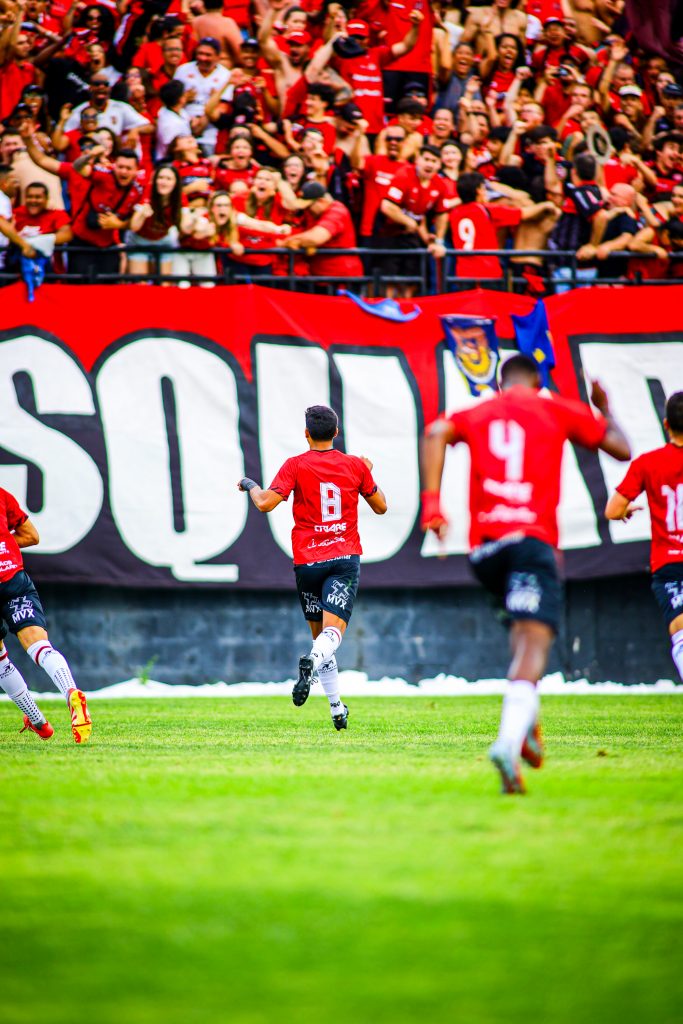
A Way of Life, Not Just a Result
To follow Brasil de Pelotas is to accept suffering as part of the deal. The club has beaten world champions, humbled Flamengo in front of 20,000 people, and flirted with the top flight — only to fall again.
Relegations came. Pain followed. Then tragedy, in 2009, when a bus accident claimed the lives of Cláudio Milar, Reginaldo, and Giovanni Guimarães. The city mourned collectively. Murals appeared. Names were sung. Memory became fuel.
This is where football in Pelotas shifts from sport to ritual.
Every chant carries history. Every scarf holds grief and pride in equal measure.

The People Behind the Badge
Brasil’s supporters call themselves A Maior e Mais Fiel — the biggest and most faithful. It’s not marketing language. It’s inheritance.
Support is passed down in kitchens and bars, from father to son, mother to daughter. Red and black shirts are worn daily, not just on matchdays. Taxi drivers talk tactics. Bakers argue about referees. Everyone has a story about Bento Freitas.
In Pelotas, football is conversation currency.

Beyond the Stadium: Living Pelotas
A weekend in Pelotas doesn’t end at full-time. It spills into bars, cafés, and late-night conversations.
Start with coffee downtown, where old theatres and colonial façades frame everyday life. Try local sweets — Pelotas is famous across Brazil for its doces, a legacy of Portuguese influence and sugar wealth. Walk toward the waterfront as the light softens, and the city feels almost Mediterranean.
At night, tables fill slowly. Conversations linger. Football inevitably enters the room.
This is not a city that performs for tourists. Pelotas doesn’t sell itself loudly — it waits to be understood.
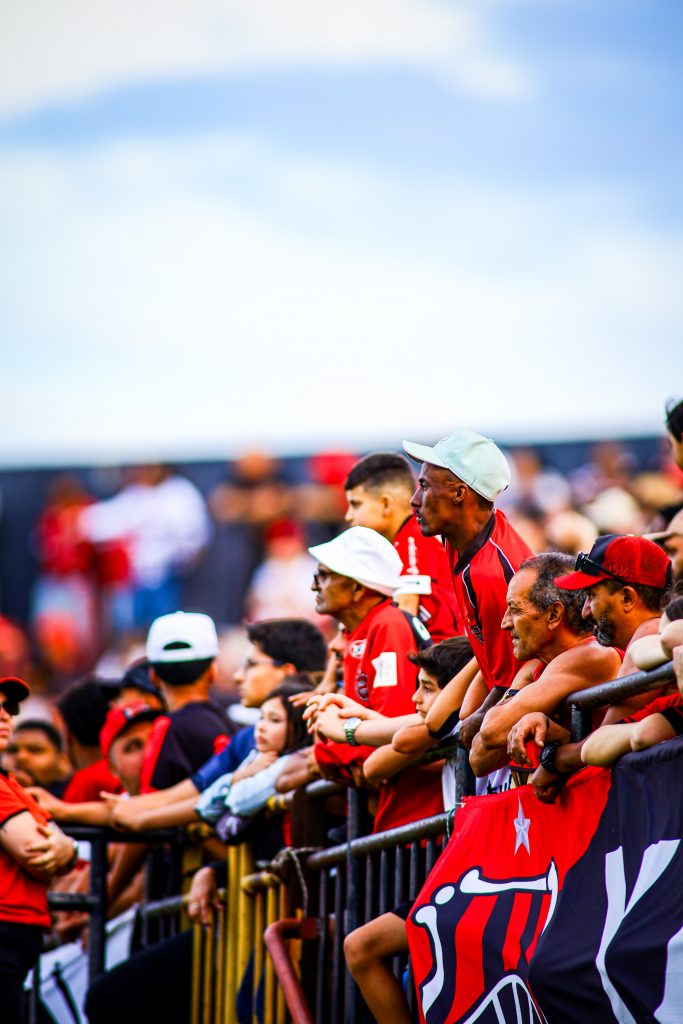
Why This Place Matters
In an era of sanitised football, Pelotas offers something increasingly rare: authenticity without performance.
Grêmio Esportivo Brasil exists outside the spotlight, powered by memory, resistance, and love. The club’s story mirrors the city itself — proud, wounded, resilient, and deeply human.
To visit Pelotas is to step into a slower rhythm of football and life. To stand at Bento Freitas is to feel what the game once was — and still can be.
This is not about trophies or trends.
It’s about roots.
It’s about people.
It’s about being Xavante.
Avante.
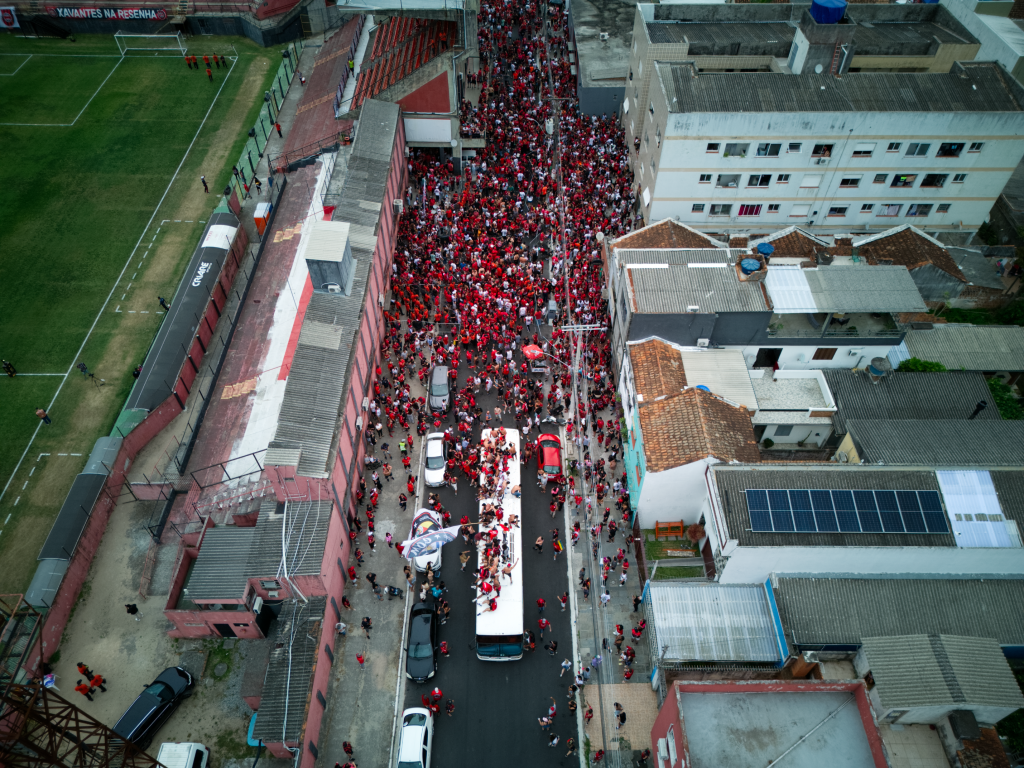
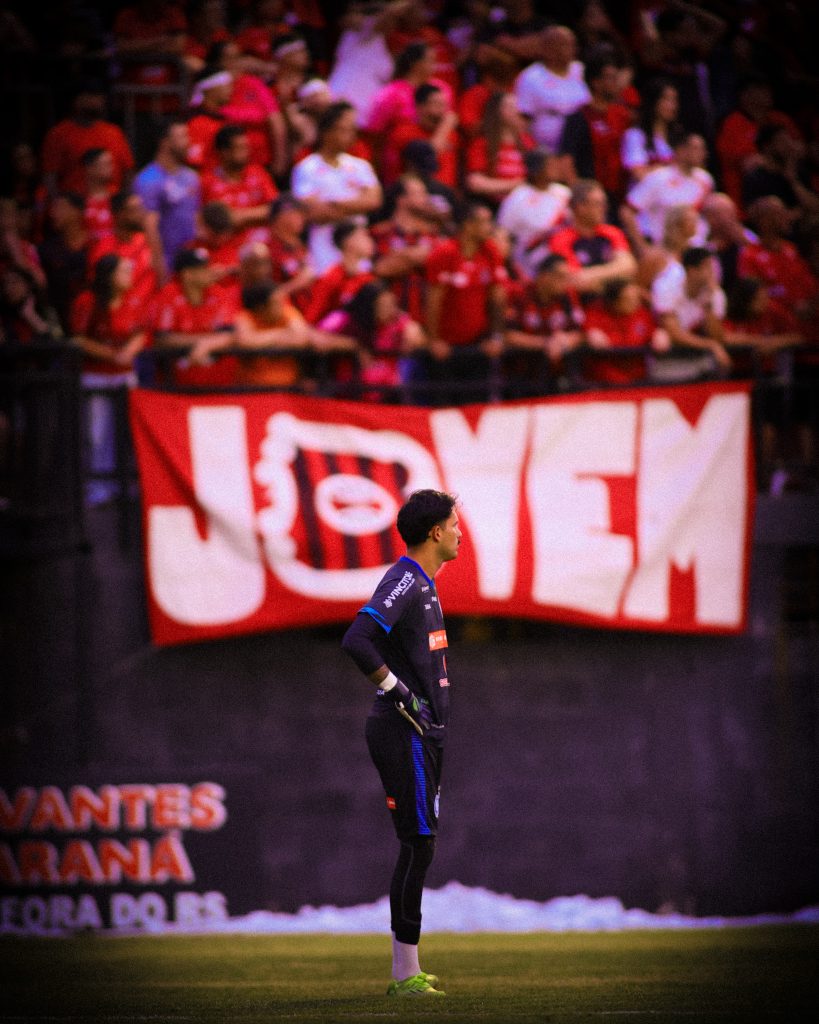
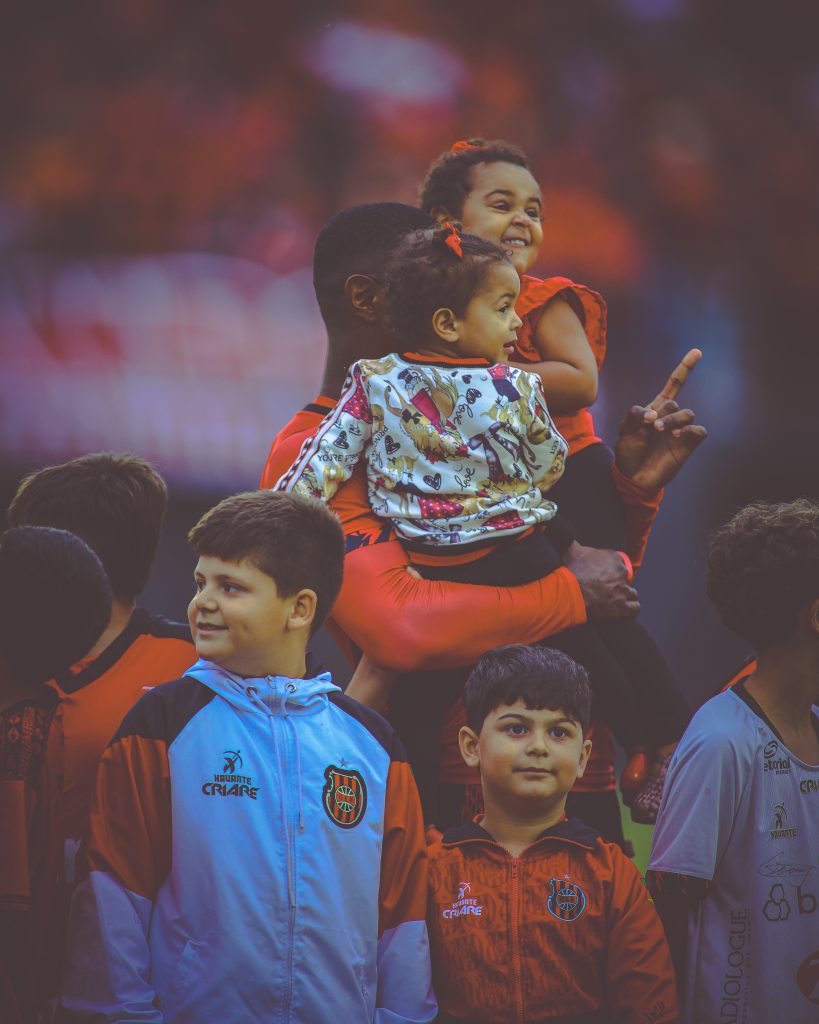
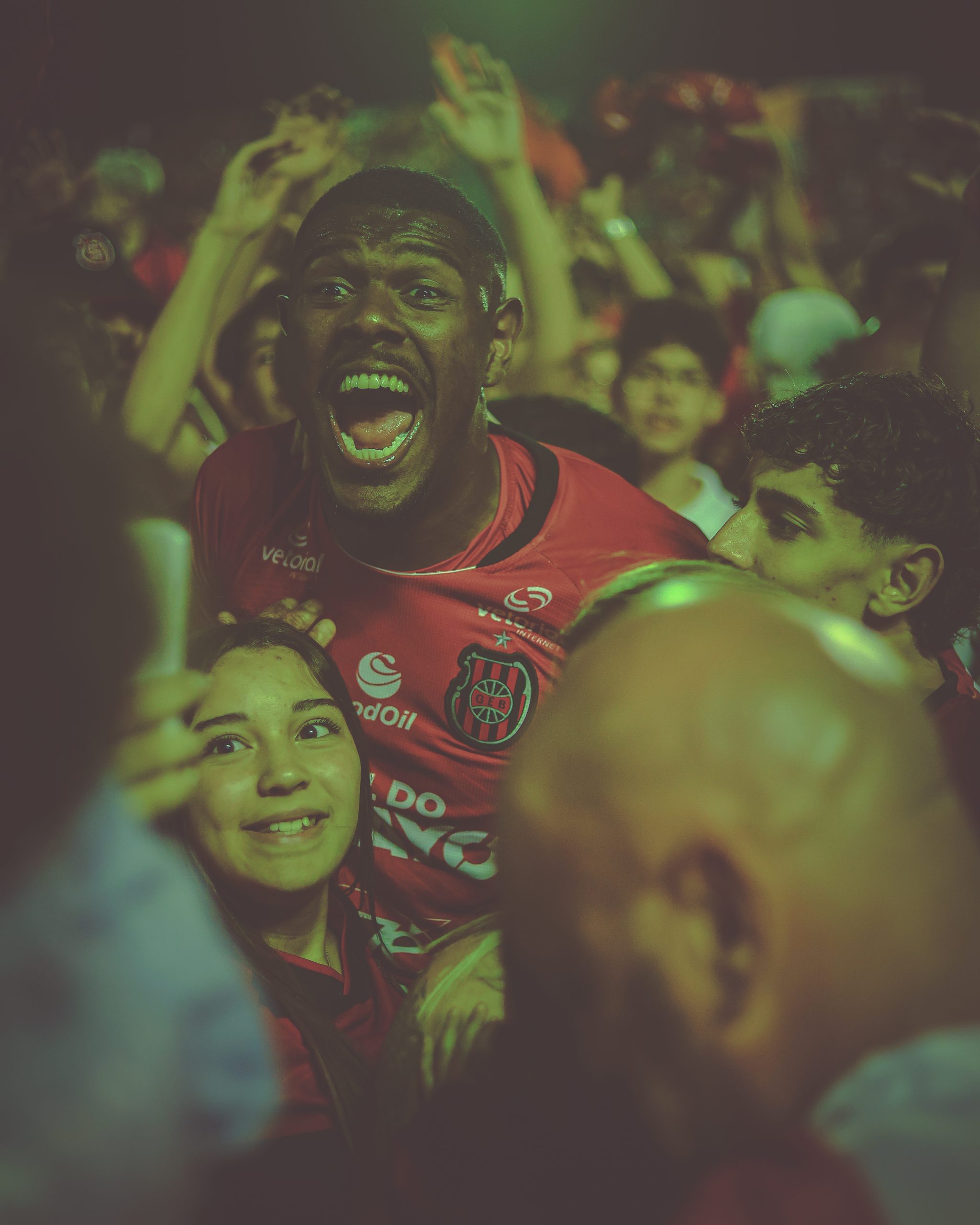
To celebrate the 80th anniversary of Sorrento Calcio, “Sorrento, Worn Over Time” is an editorial project accompanying the launch of the anniversary jersey designed by Ezeta. A story that chooses to begin with what makes this milestone truly meaningful: people, and the deep bond between a club and its city.
Shaping the visual narrative is the photographic gaze of Giuseppe Romano, who moves through Sorrento following gestures, places, and people that define the city’s identity every day. His images capture a living relationship between the jersey, the city, and those who wear it, leaving space for time rather than emphasis.
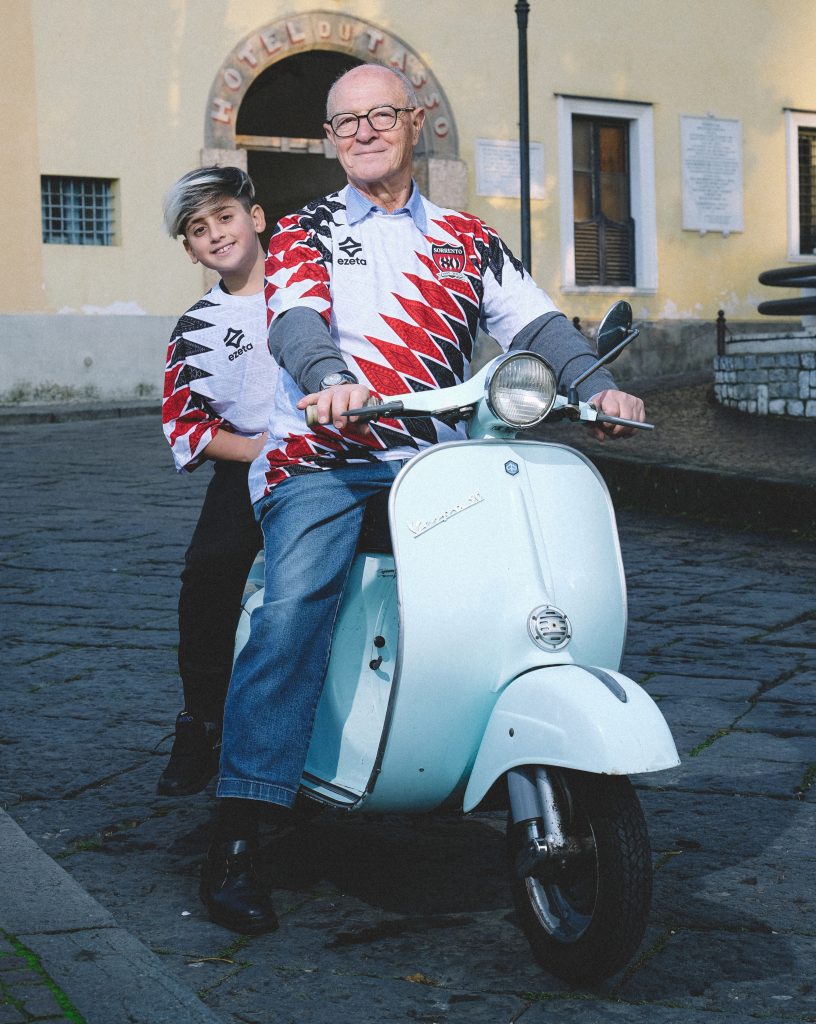
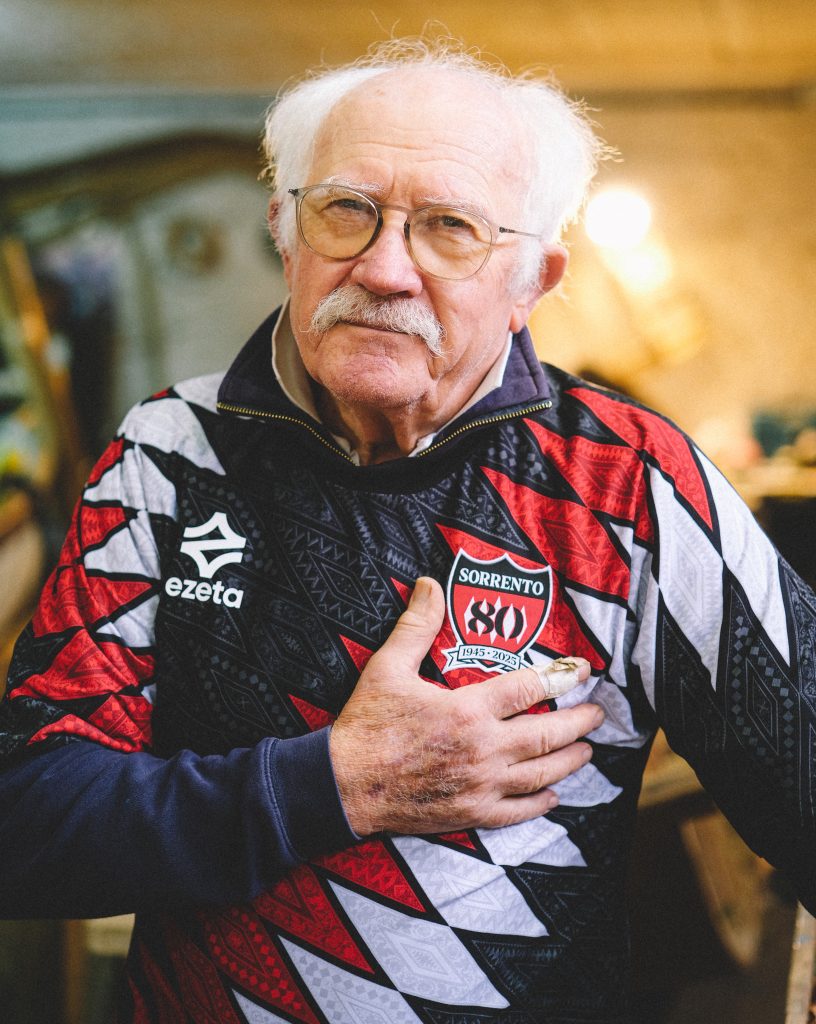
The project originates from a proposal by Ezeta, who envisioned this anniversary not as a purely aesthetic celebration but as an opportunity to give voice to a shared history. From this intuition came the collaboration with Magliofili and Sport Media House, who curated the creative direction of the project, bringing together different sensibilities and languages to build an editorial narrative that enhances the jersey’s design and cultural meaning.
This story did not start in a photographic studio, but in the streets of Sorrento. The project took shape by walking through the city, knocking on workshop doors, entering laboratories, and stopping in places of everyday life. Those who live and work in Sorrento were asked what the city represents to them, and to wear a jersey that celebrates eighty years of belonging, memory, and identity.
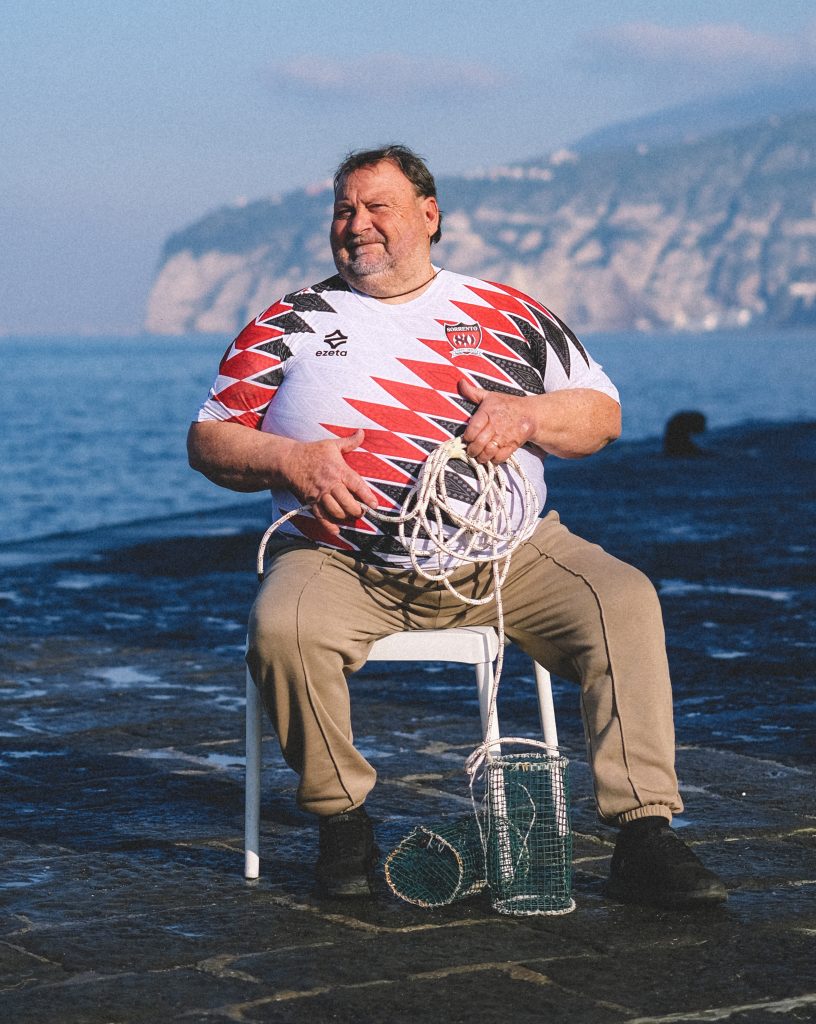
The jersey thus becomes something alive, far from a purely celebratory or symbolic representation. It is part of daily life: work, routine, effort, and joy. A legacy that is not preserved, but worn.
The two versions of the jersey, white and black, are interpreted by real citizens, chosen not as models but as protagonists. Not didactic portraits dividing generations, but images that speak of encounters, exchanges, and continuity between past and present.
Iconic and ordinary places throughout Sorrento become an integral part of the narrative. The city is not a backdrop, but a living context, naturally intertwined with the jersey and the situations of everyday life.
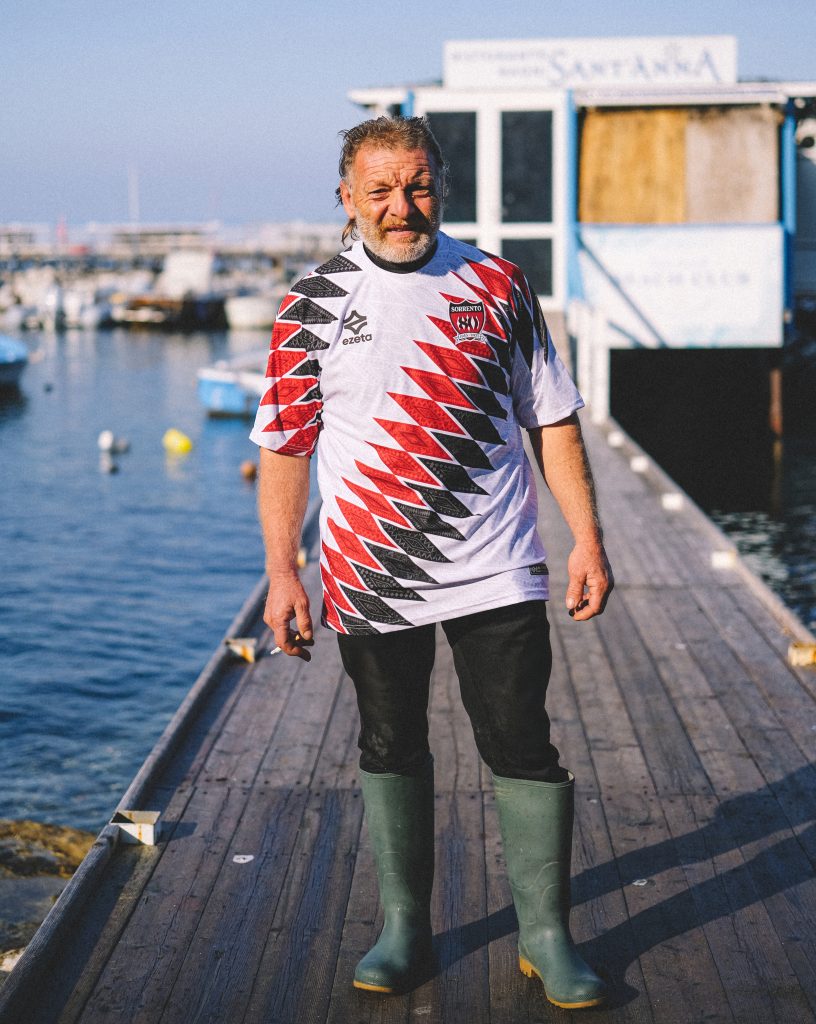
The editorial project will be presented through a selection of photographs and video content released on social channels, accompanying the launch of the anniversary jersey.
Because some stories do not belong to a single moment.
They live through time, and they continue to be worn.
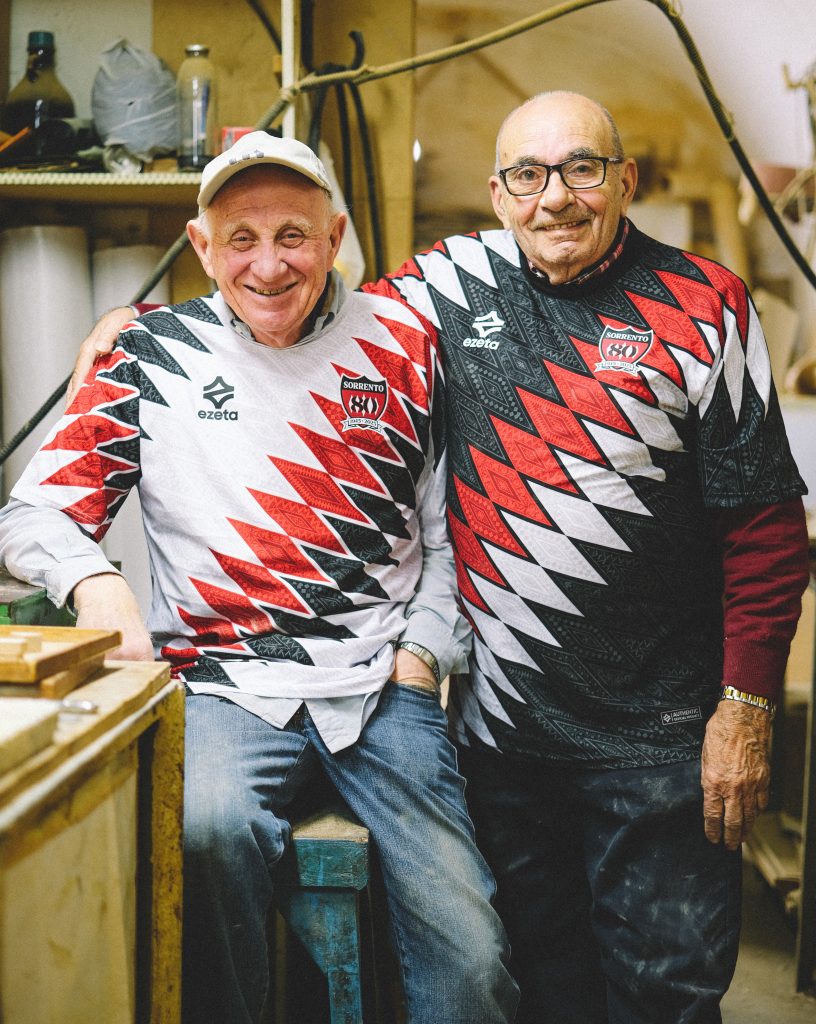
Images by Giuseppe Romano,
Kit available at: Ezeta.
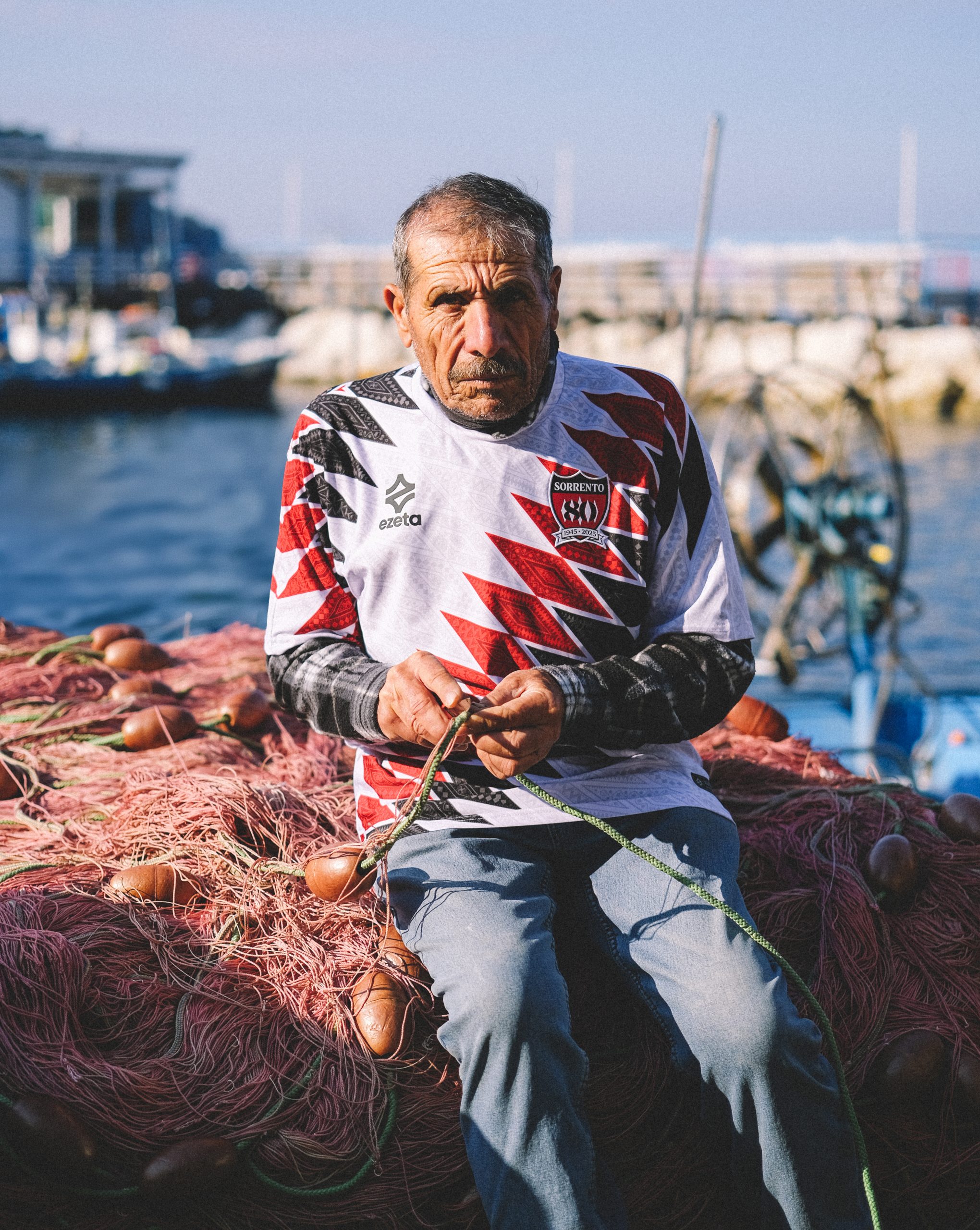
All words and images: Imma Rhamely Borrelli
They are quieter than the stories of the ultras, perhaps, but no less rich — lives shaped by football and devotion.
A December Ritual
December 8th marks the unofficial beginning of the Christmas holidays in Italy. Homes are dressed with fairy lights and mistletoe, while cities illuminate towering trees in both grand piazzas and quiet neighbourhood squares.
I, on the other hand, spend this day at the Partenio–Lombardi Stadium in Avellino for a Serie B clash between Avellino and Venezia.

Outside the Ground
The stadium’s perimeter walls tell their own story — a collage of murals and stickers, both historic and contemporary. In the car park opposite, makeshift stalls sell scarves and gadgets, while kiosks offer sandwiches and soft drinks. The air is thick with smoke, chatter, and that familiar pre-match adrenaline.
I follow the flow of supporters and enter the Tribuna Terminio. I never quite make it to my assigned seat in the press box, choosing instead the balcony. In Avellino, people are hospitable, open, and generous — something that cannot be taken for granted. They have no hesitation in making space for me, even as a foreigner with a camera slung around my neck, offering me a perfect vantage point of the pitch.

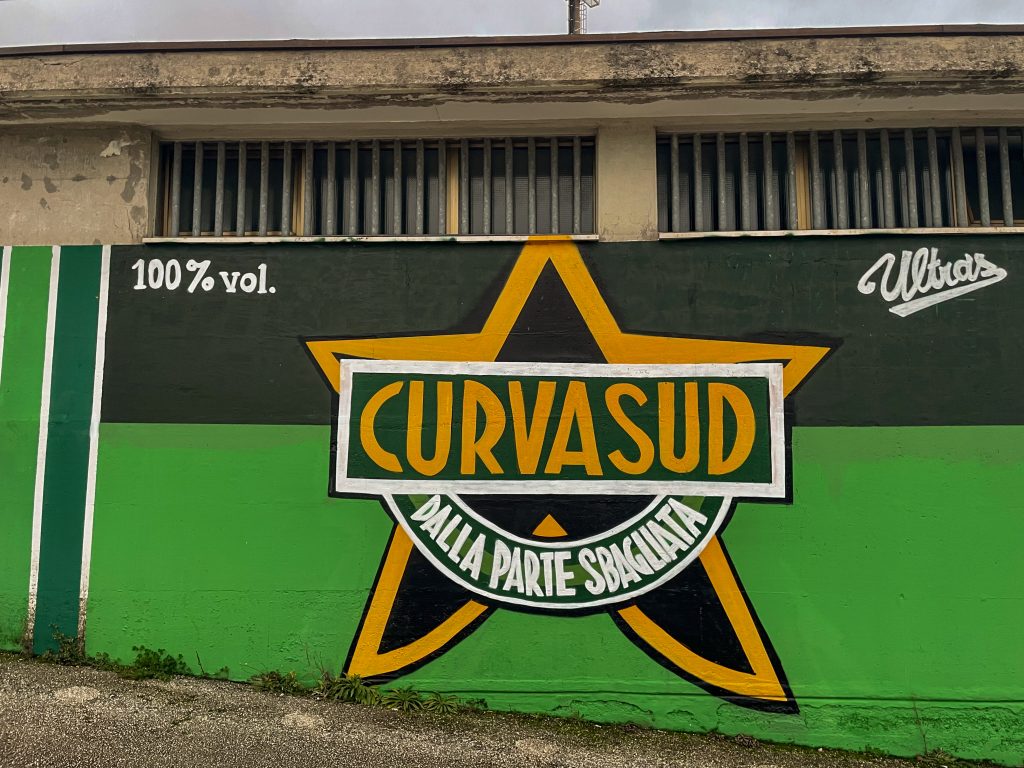
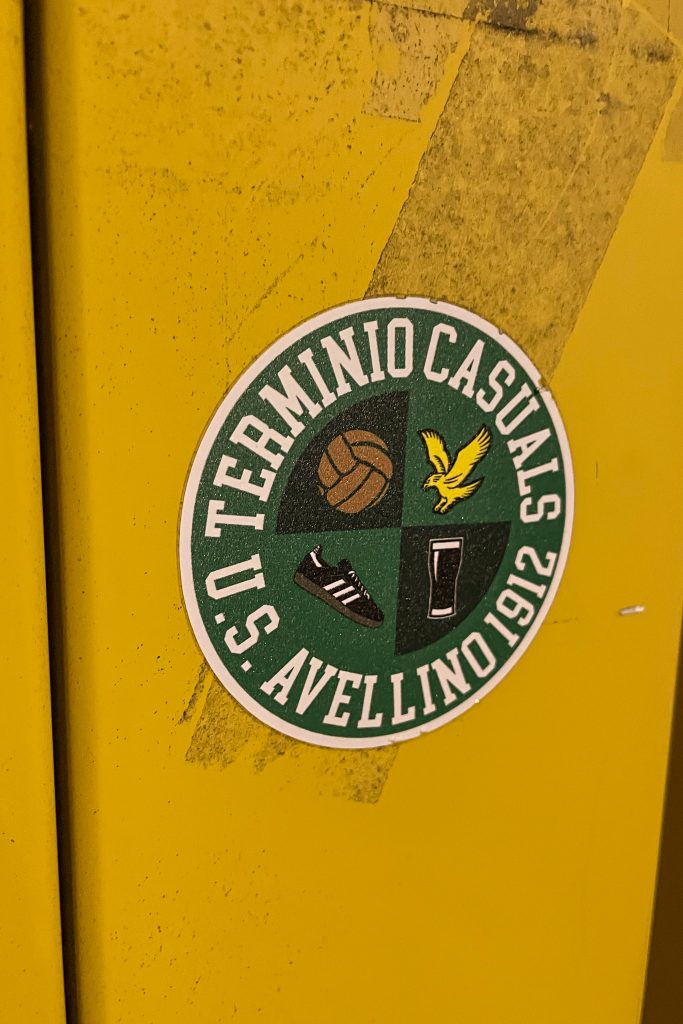
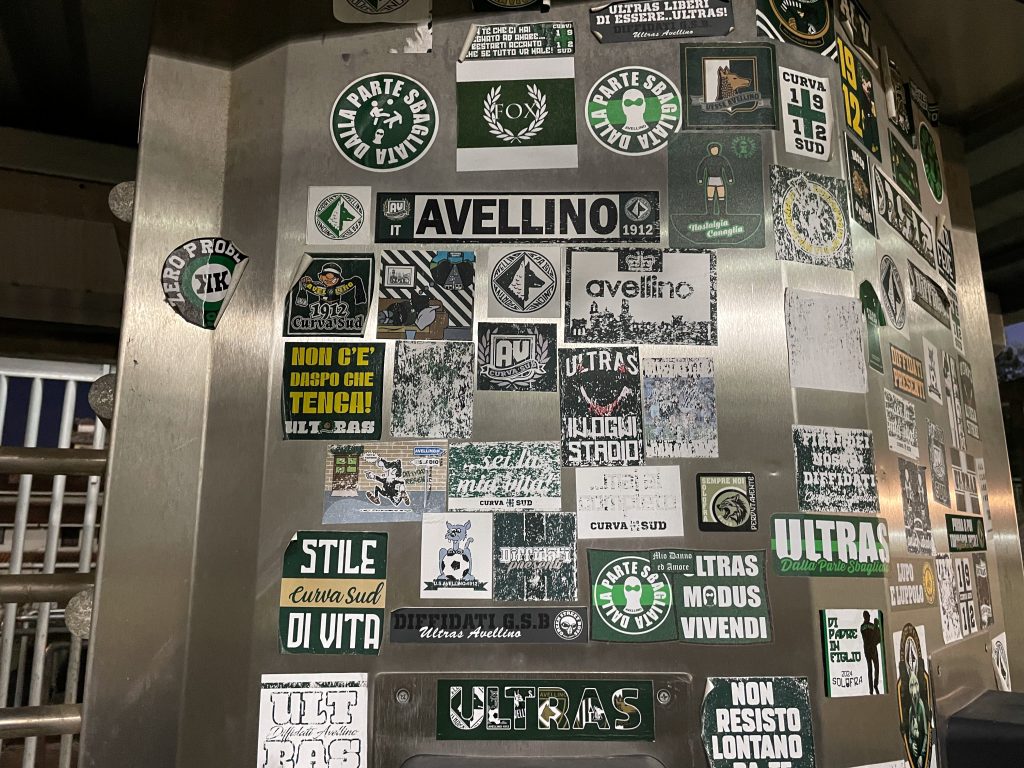
Colours from the Away End
According to official figures, around 120 Venezia supporters are present. My side-on view of the away section is partial, but close enough to hear them clearly during the brief moments when the home curva allows itself a pause. They are colourful, armed with flags, and in the first half even risk bare-chested chants. A strong showing, both in voice and presence.
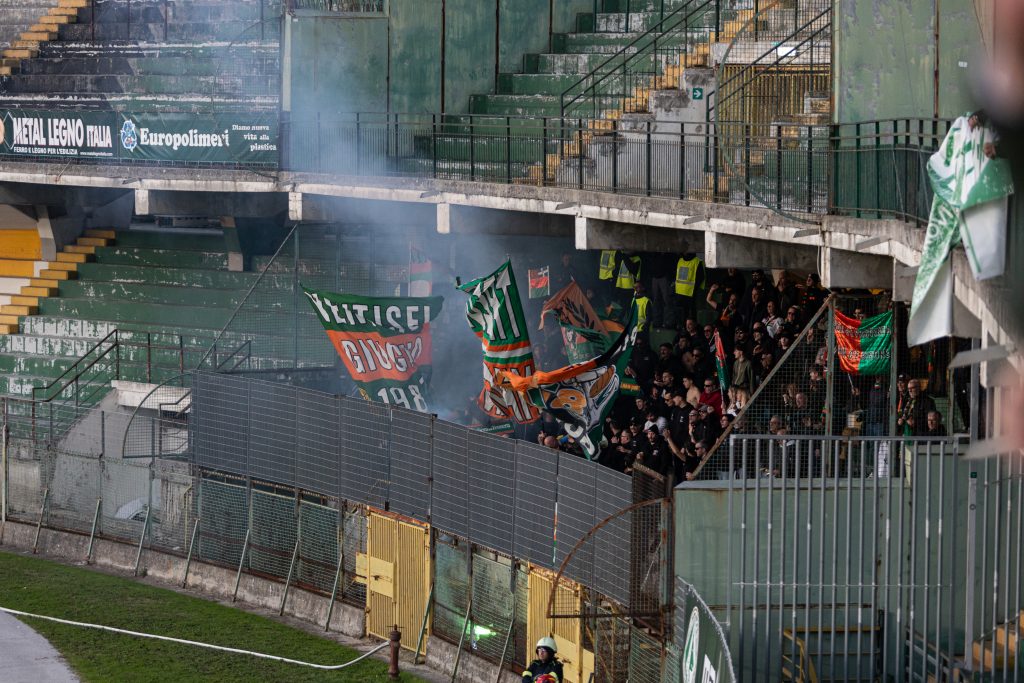
The Heartbeat of the Curva Sud
The Curva Sud of Avellino, however, is a spectacle in itself. Hands rise into the air as voices thunder “LUPI!” before the flags of the various groups begin to wave in unison. It is a ritual, a collective ignition.
Watching a match from within the stands is something entirely different from viewing it from the sidelines, where attention gravitates towards technical details and tight angles. Among the fans, football becomes a collection of lives and stories.


Sunlight, Smoke, and Song
Beside me stands Mr Vincenzo, listening to live commentary through a small radio pressed to his ear. He tells me he has been coming to the stadium for forty years. He recalls journeys by train and bus, always following Avellino, always faithful, a true lupo. These encounters are only possible through proximity. They are quieter than the stories of the ultras, perhaps, but no less rich — lives shaped by football and devotion.
A generous winter sun warms the green land of Irpinia and those of us in the stands. The feeling of satisfaction I experience here — in this exact place — is complete and impossible to replicate elsewhere.
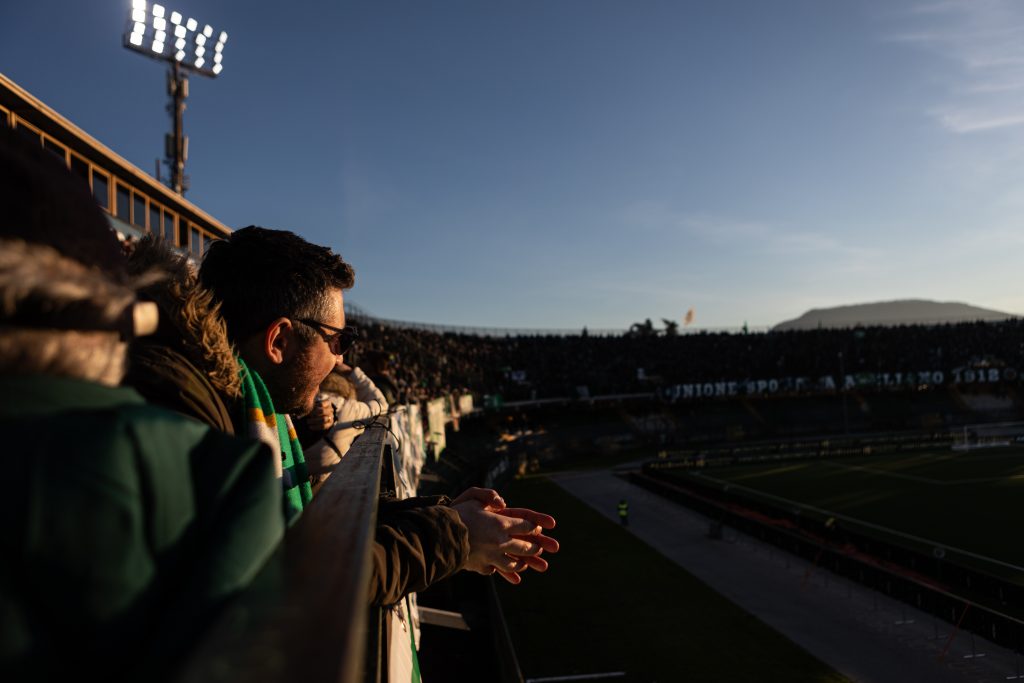
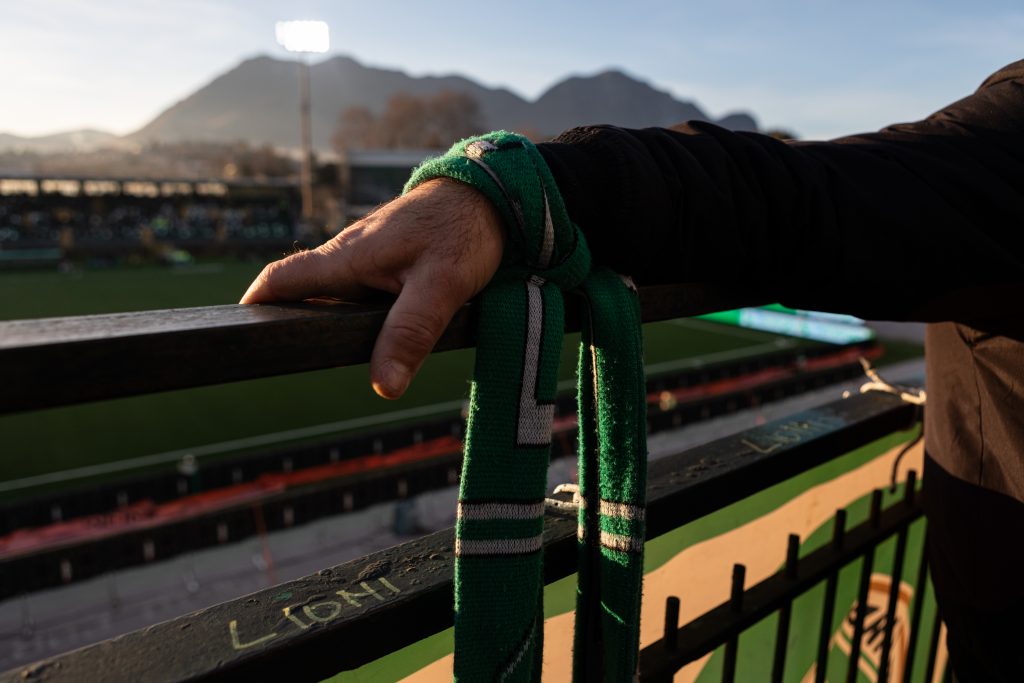
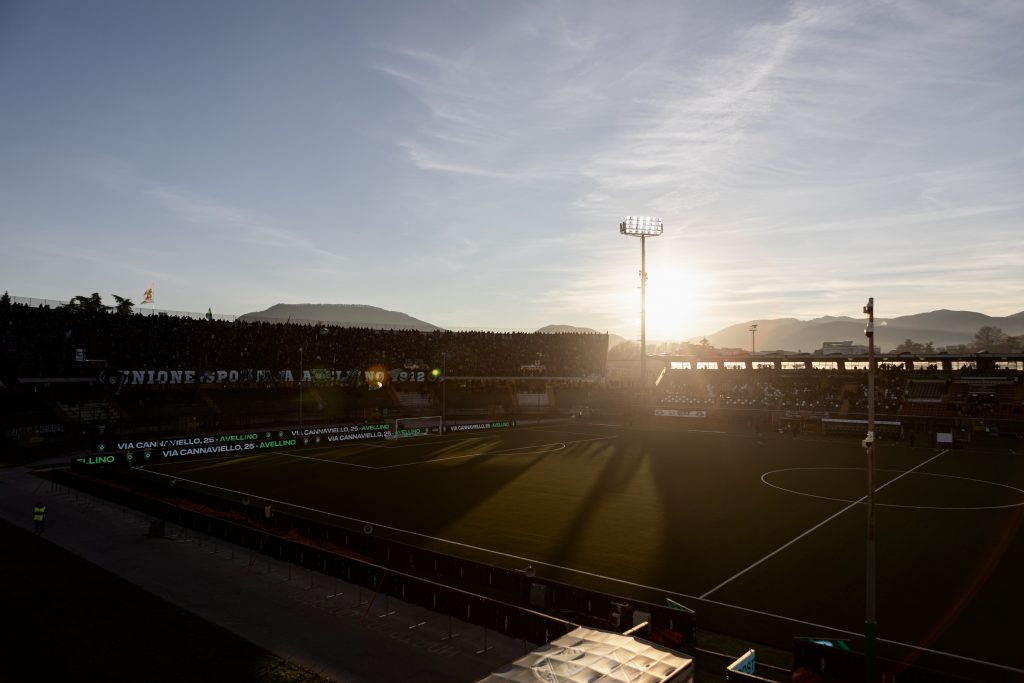
On the pitch, the match is lively. The crowd moves in rhythm with the game, voices rising and falling with every passage of play. When Avellino score, the stadium seems to shake. “Forza lupi!” shout the boys beside me, offering peanuts bought at the bar. One of them wears a faded, well-worn scarf — a living object that has clearly witnessed many afternoons like this.
Smoke bombs flare intermittently between the away section and the Curva Sud. A series of spectacular saves sends Vincenzo into rapture. He turns to me proudly: “Have you seen how beautiful my Avellino is?”
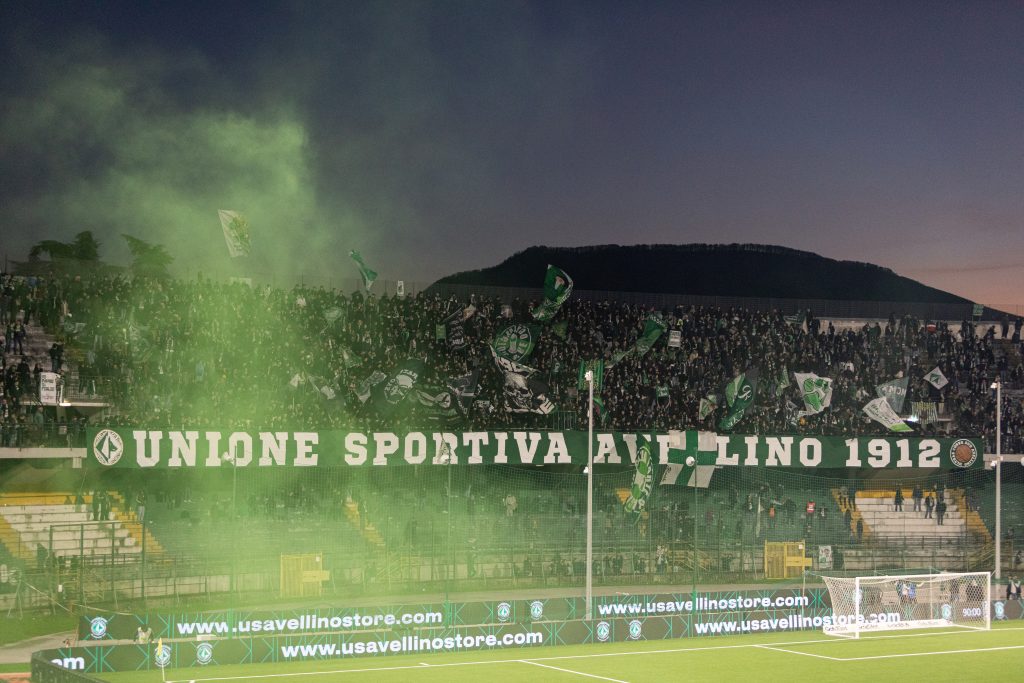
A Tense Finish
In the final minutes and added time, it becomes impossible not to put the camera aside and simply watch. The curva presses relentlessly, as does the entire stadium. Venezia score, but VAR intervenes — offside. The final whistle confirms a 1–1 draw.
At full time, the stadium becomes a wall of green scarves.
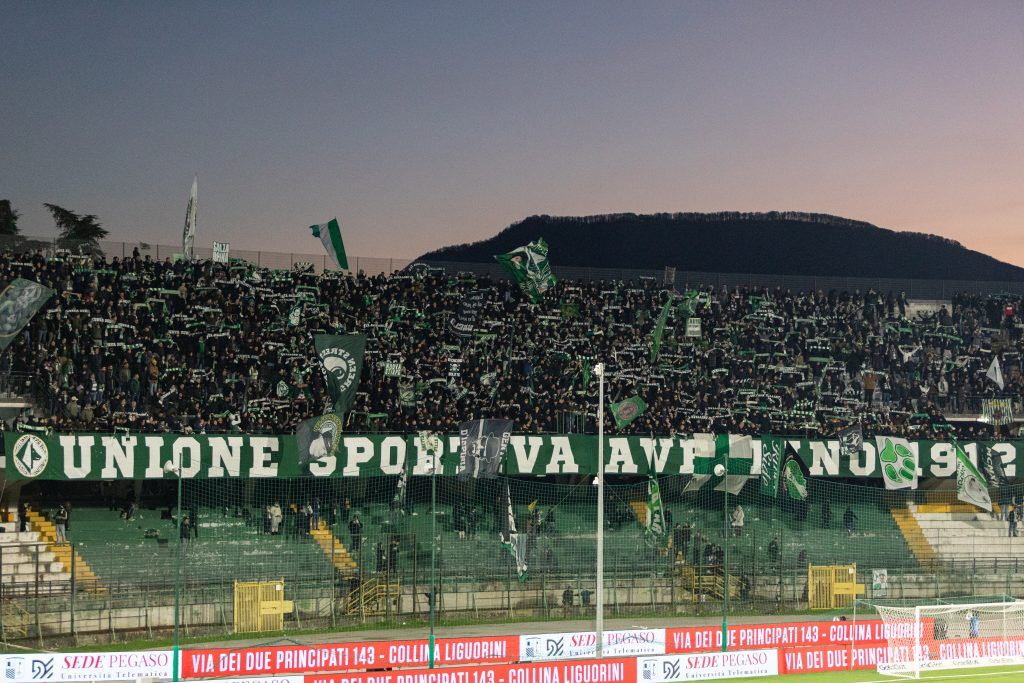
Lingering Moments
No one seems in a hurry to leave. While the away fans wait to be escorted out, the Curva Sud’s “third half” unfolds — chants of unity, freedom for ultras, and the right to travel freely. Eventually, the stewards arrive, gently urging people to clear the steps.
On my way out, I stop once more to photograph the stickers around the turnstiles. Leaving something beautiful is never easy, but memory helps soften the departure — sometimes even before the moment has fully passed.
Back in the car, as traffic inches forward and warm air fills the cabin, I begin to organise the experience in my mind, hoping to write about it with the care it deserves.
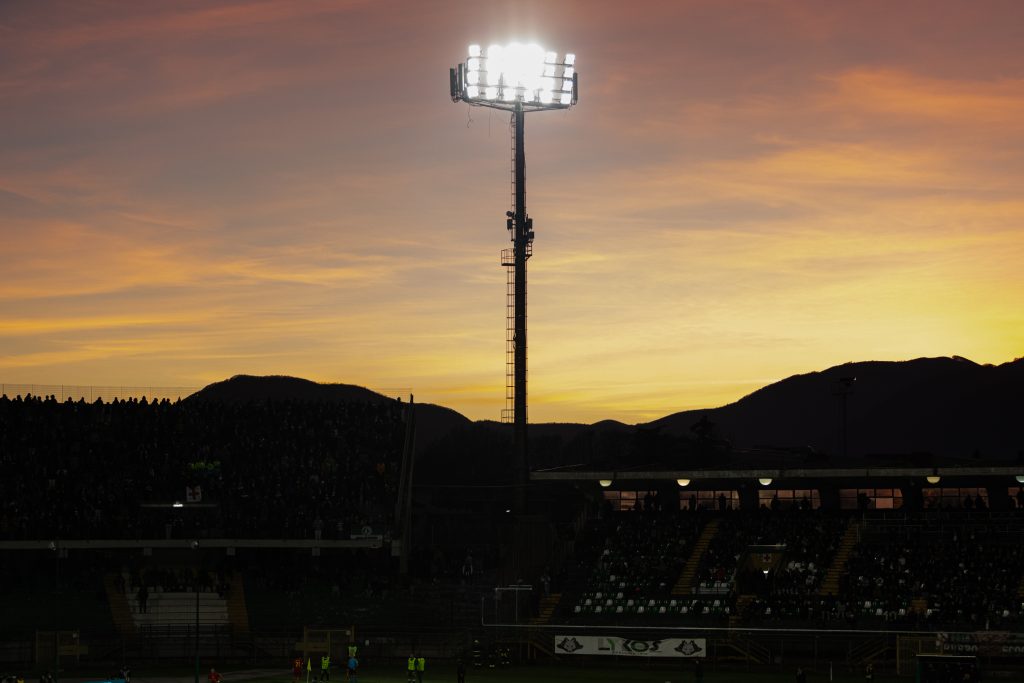
All words and images: Imma Rhamely Borrelli
